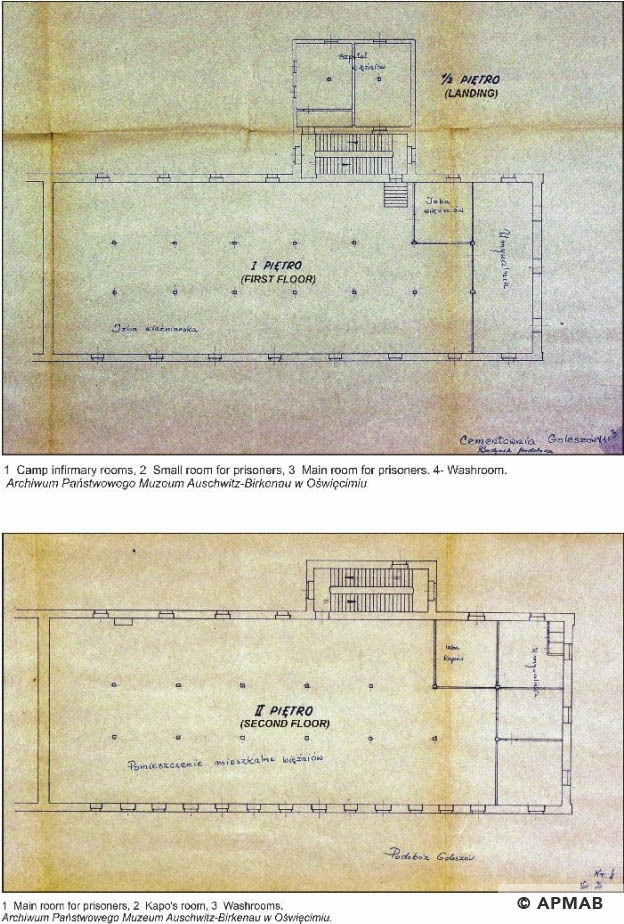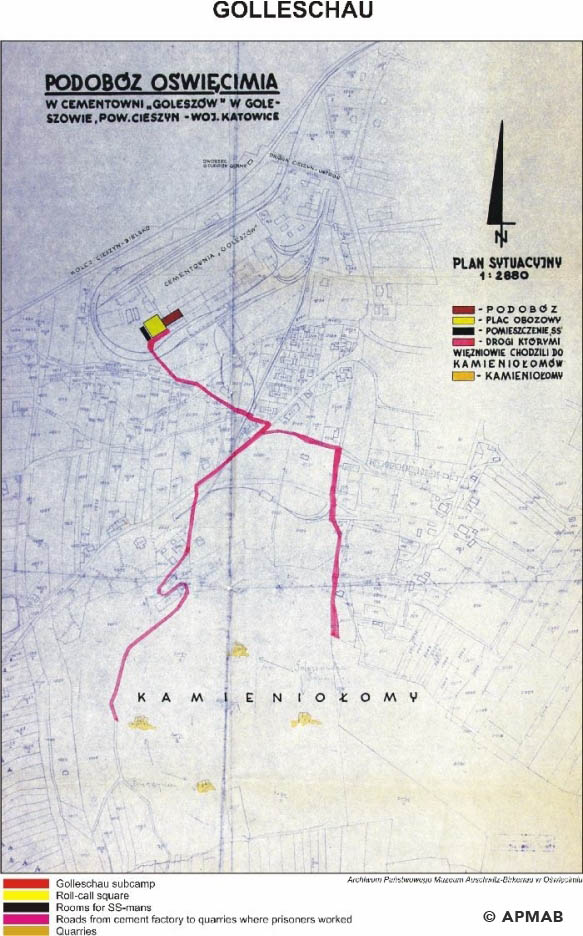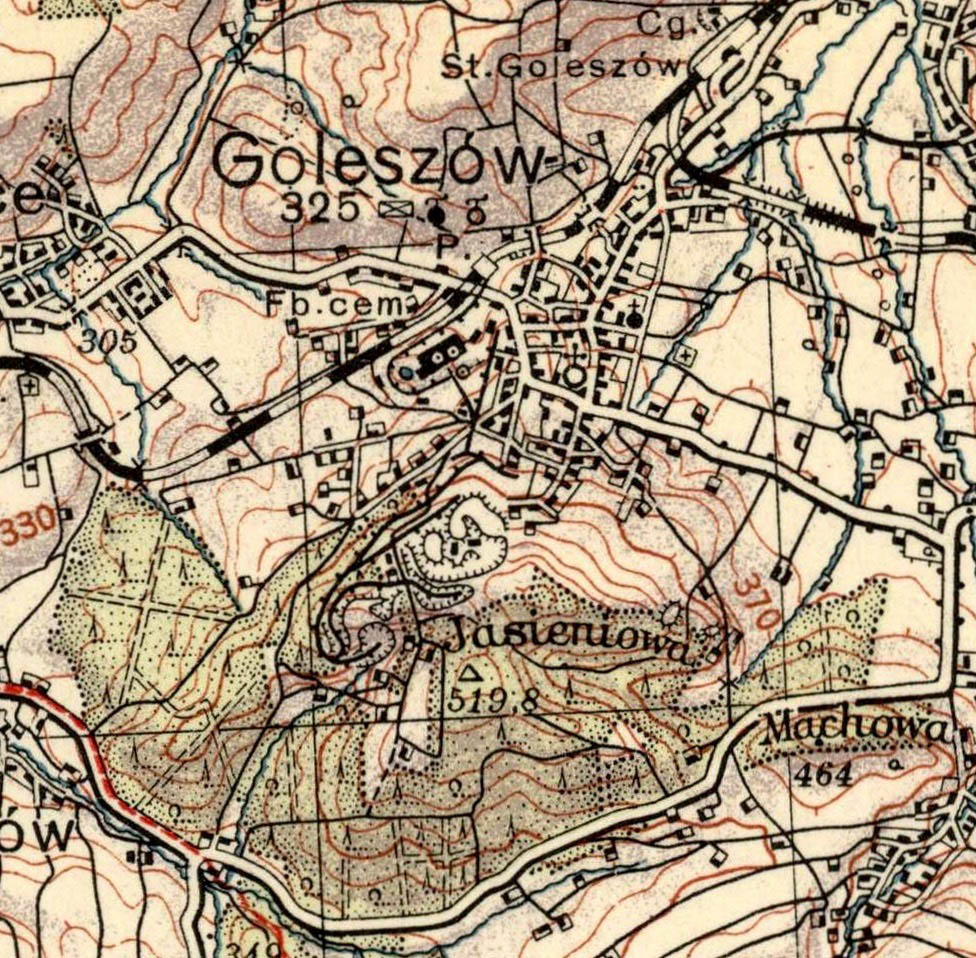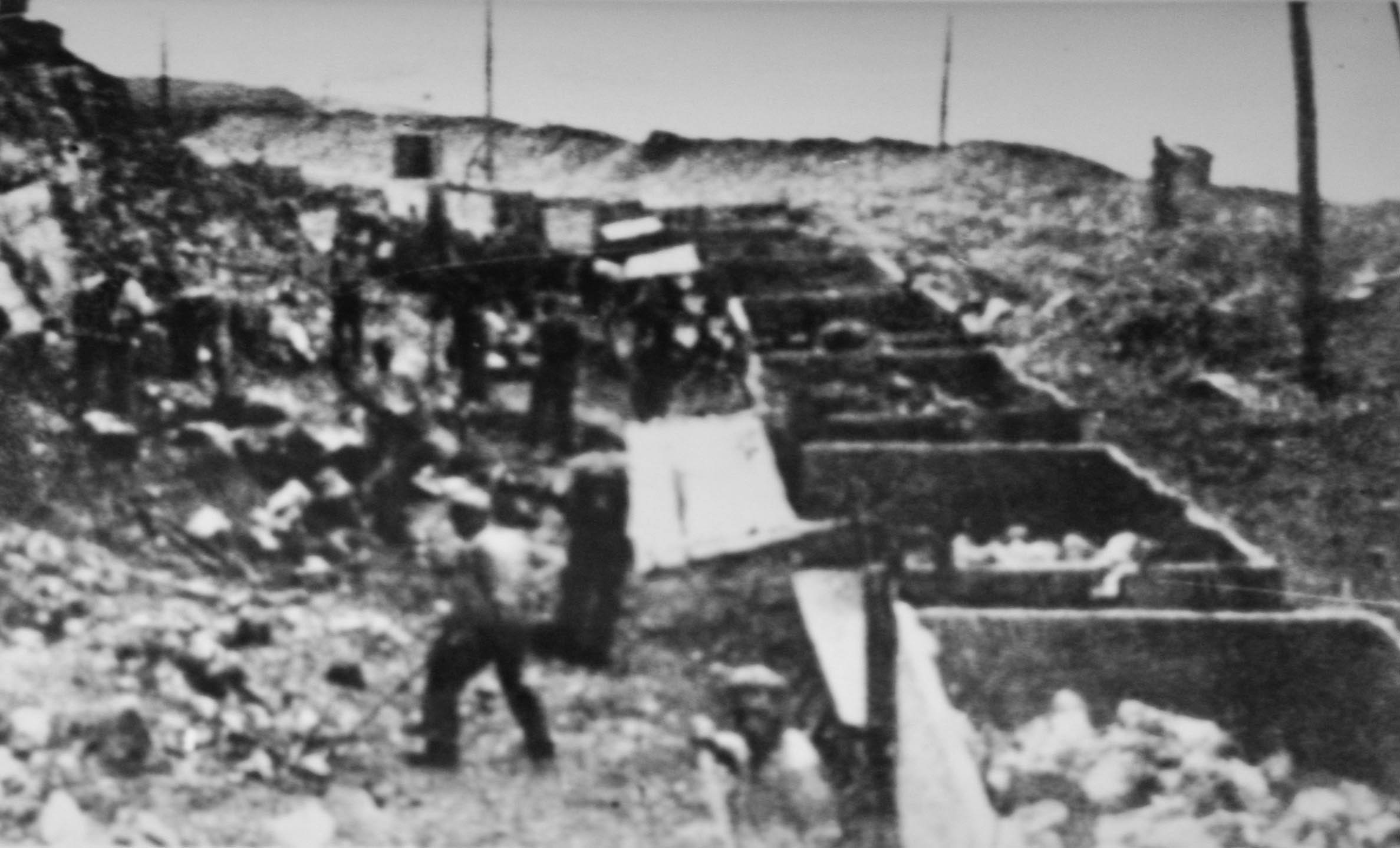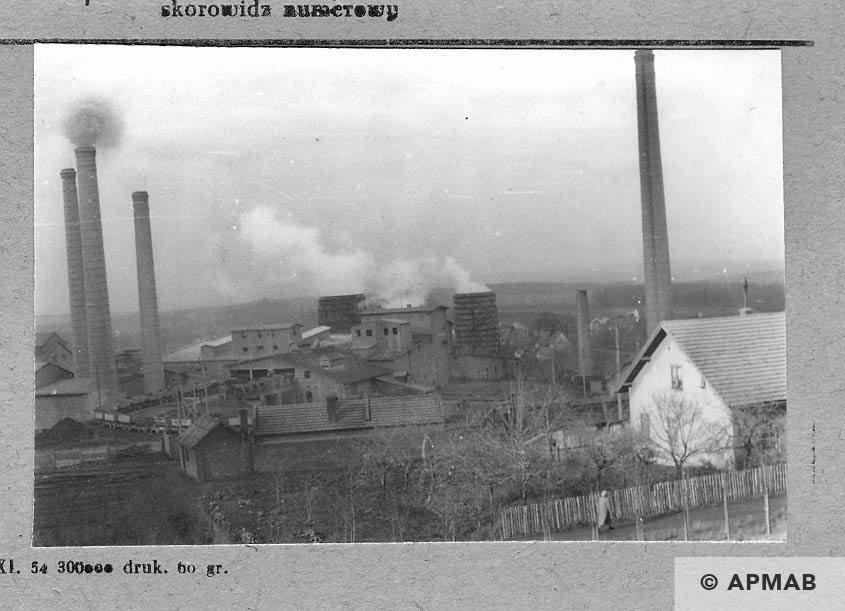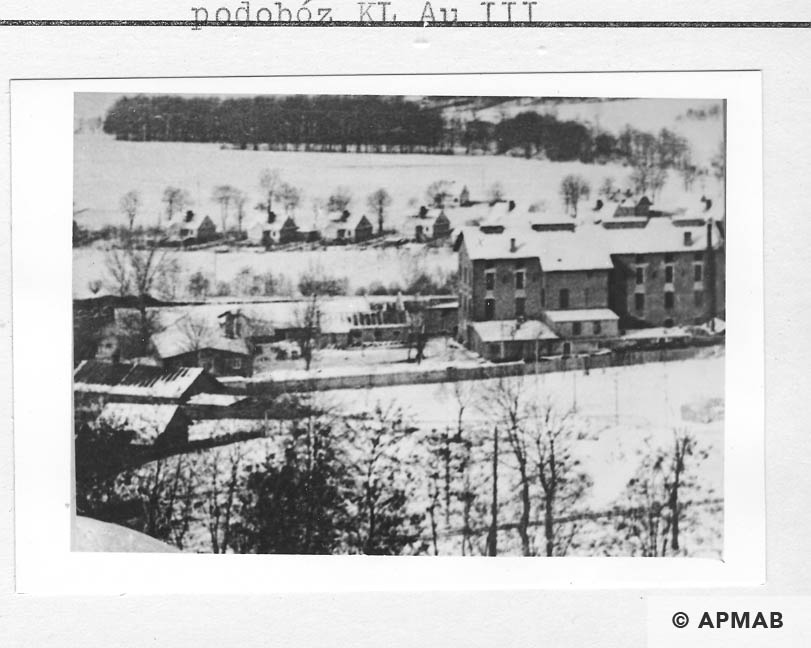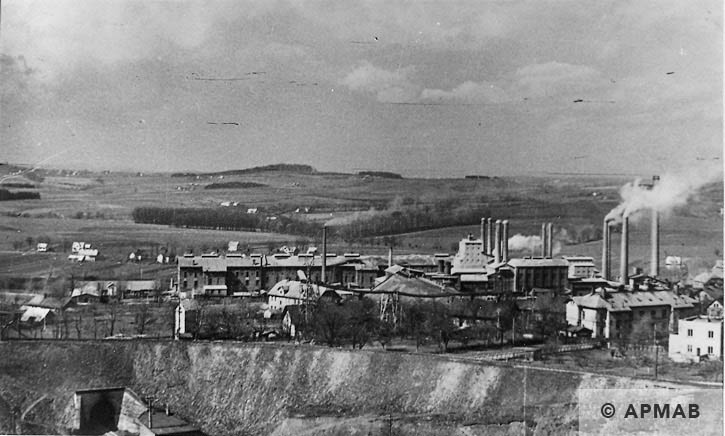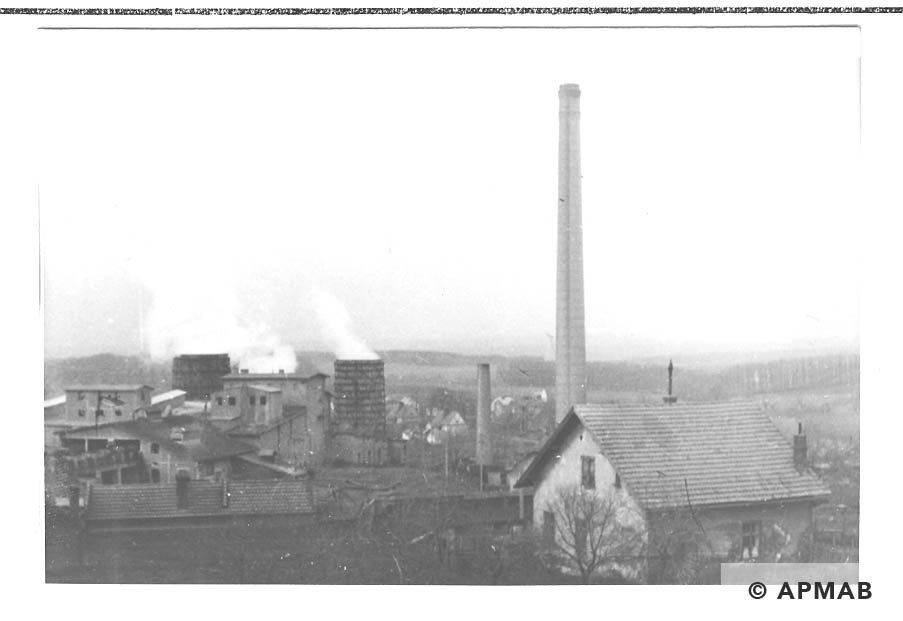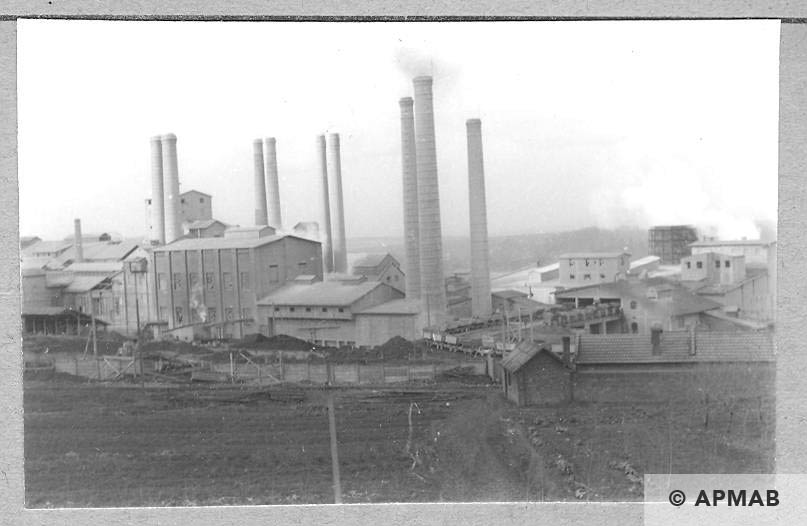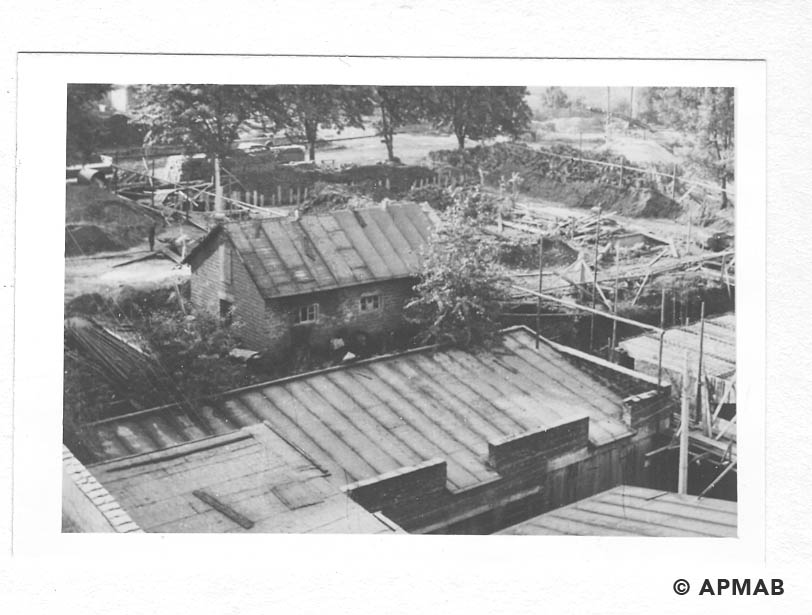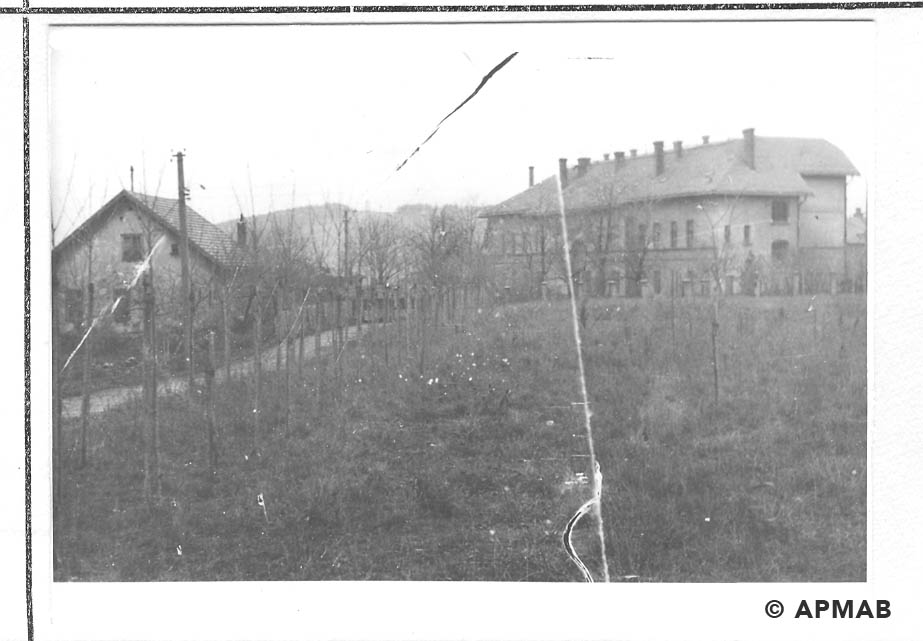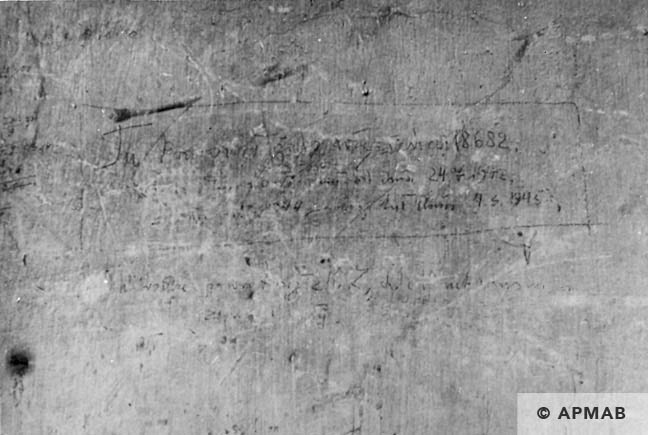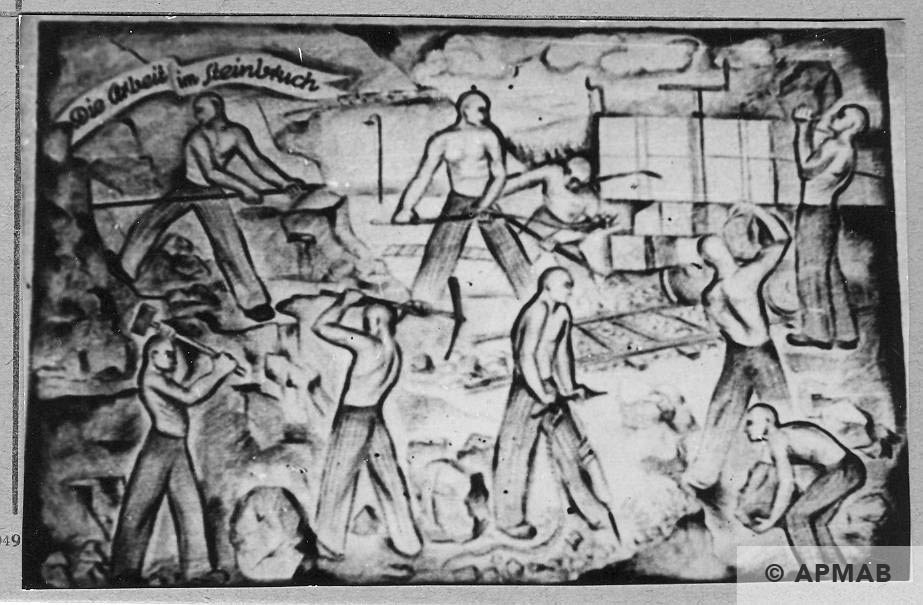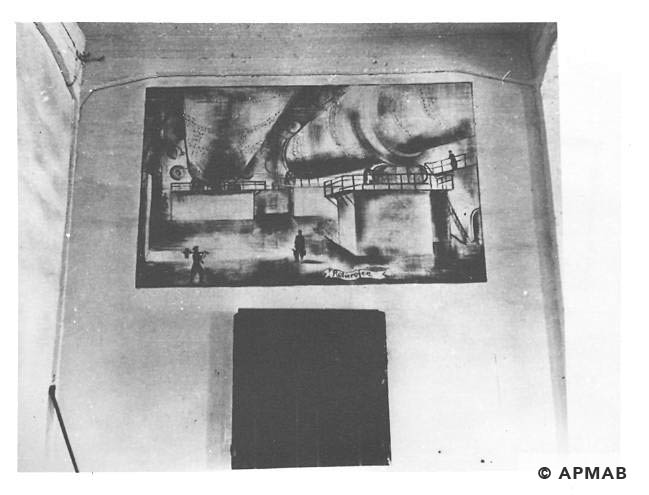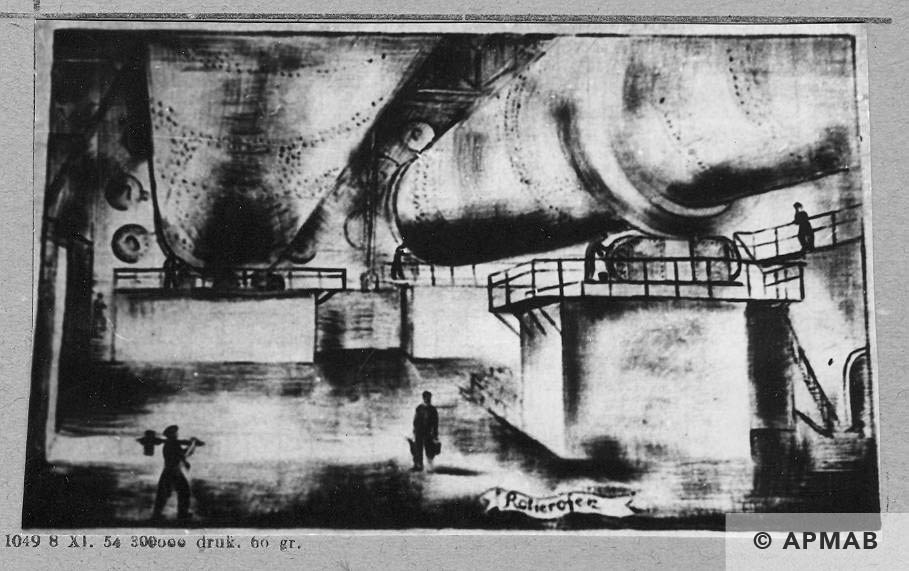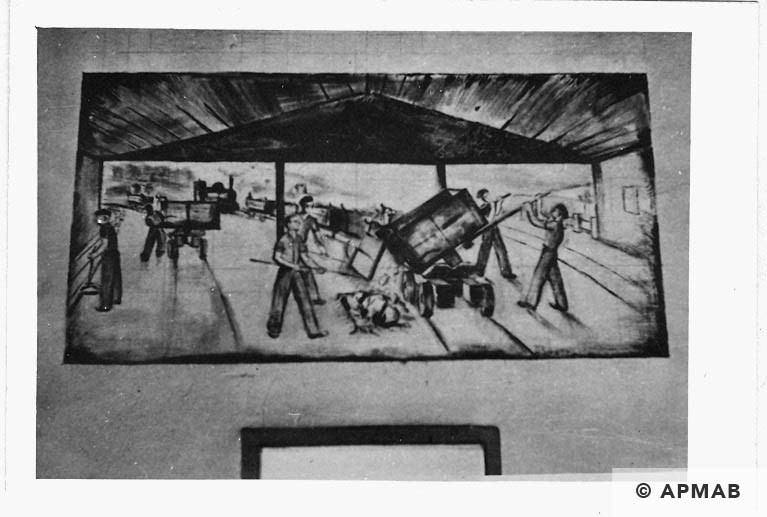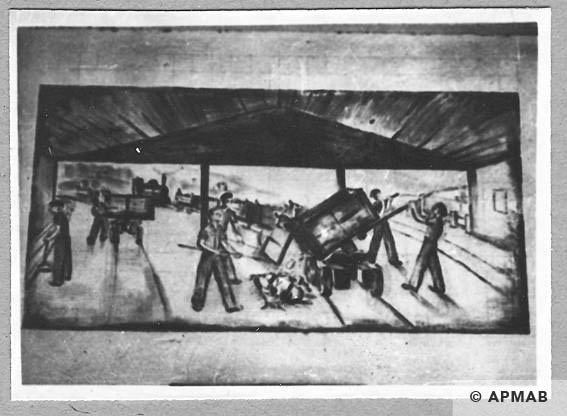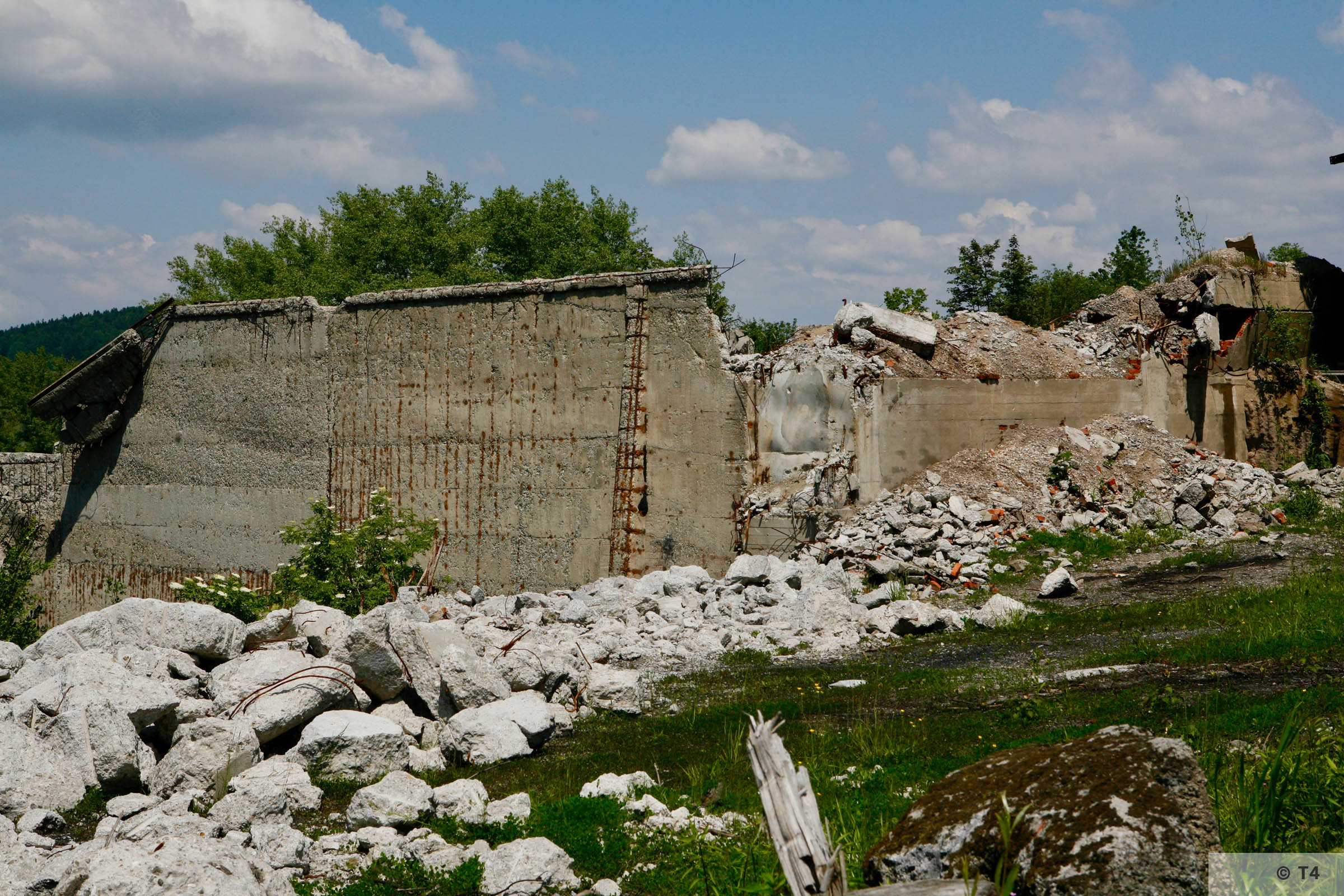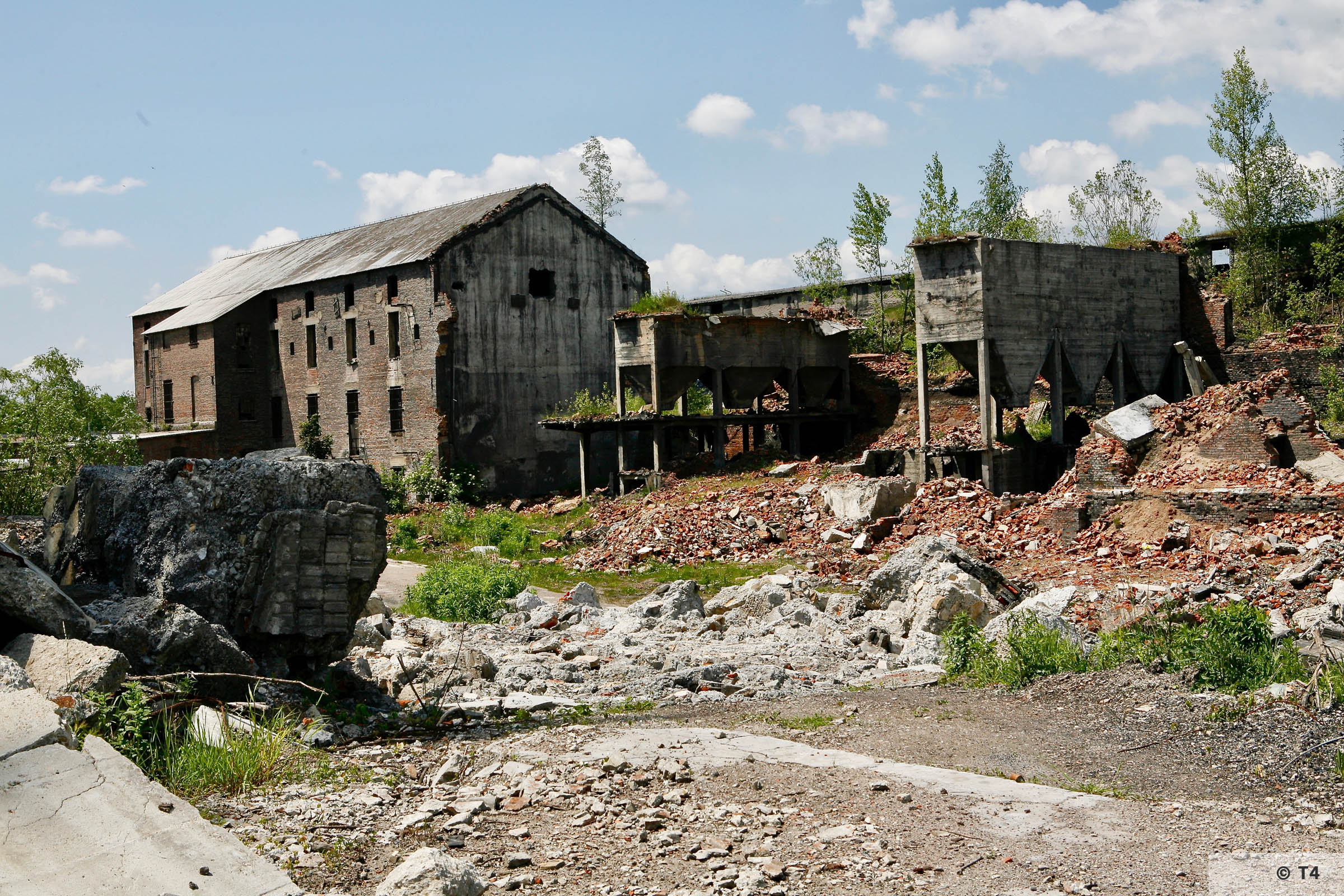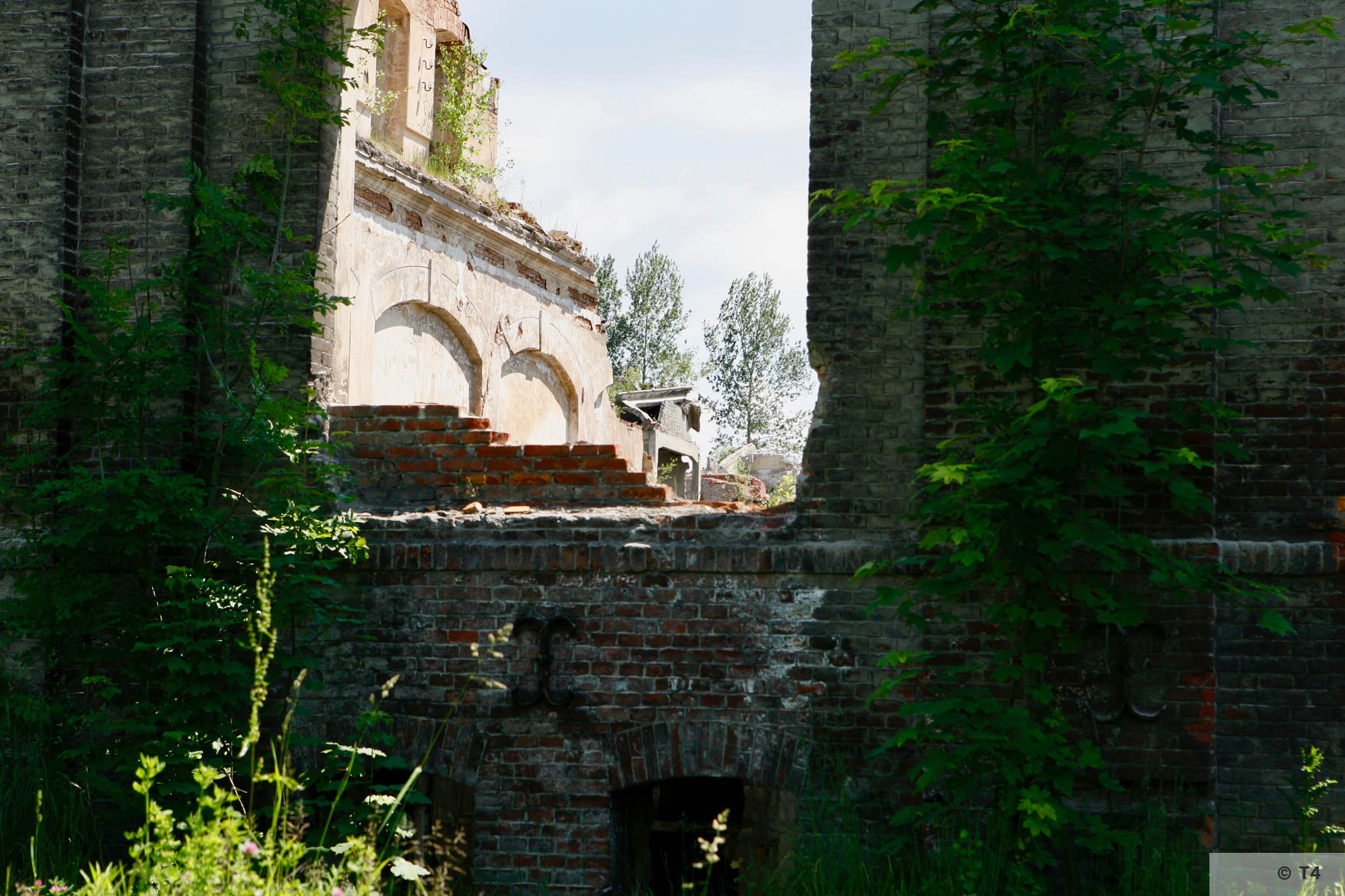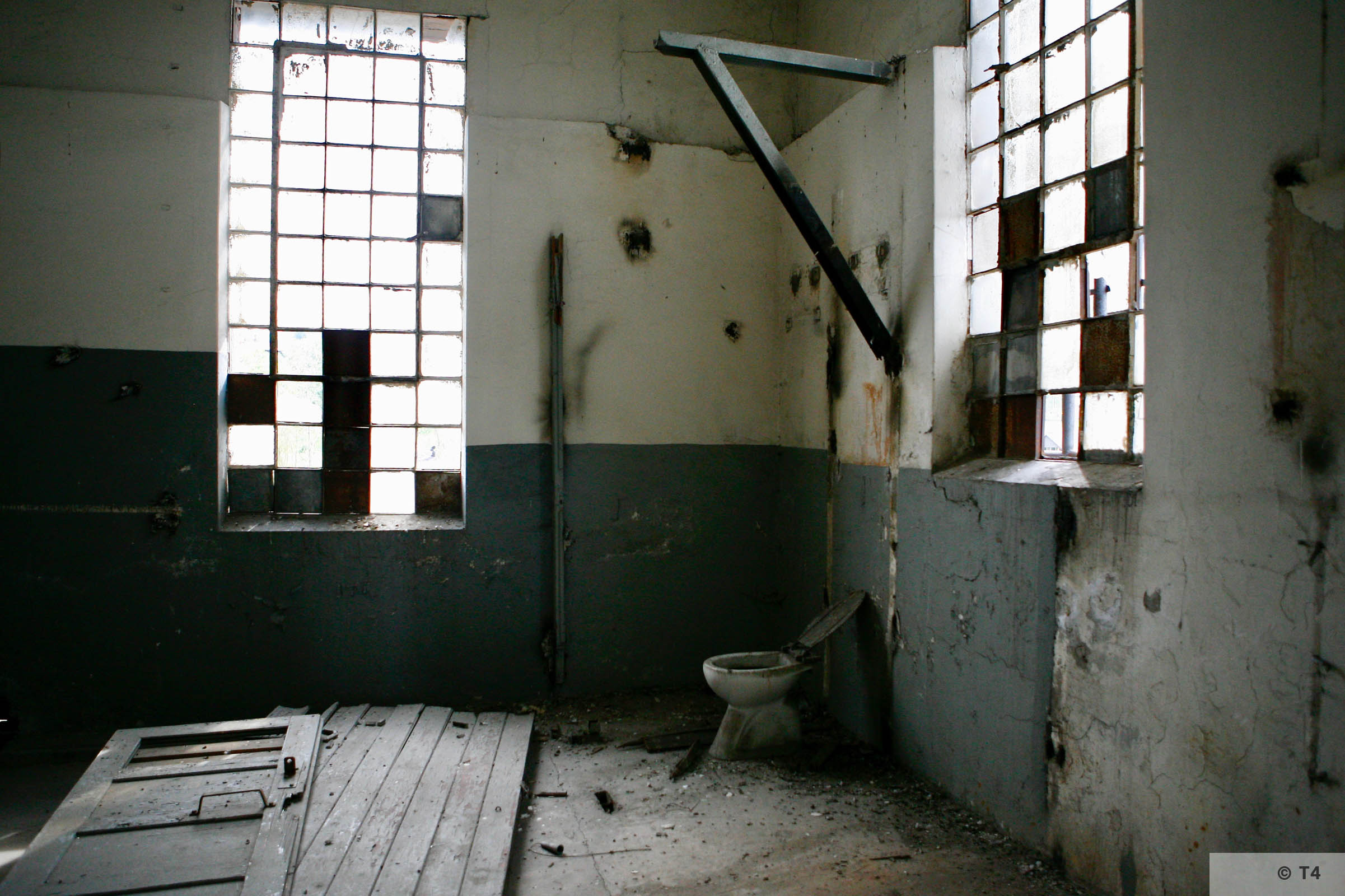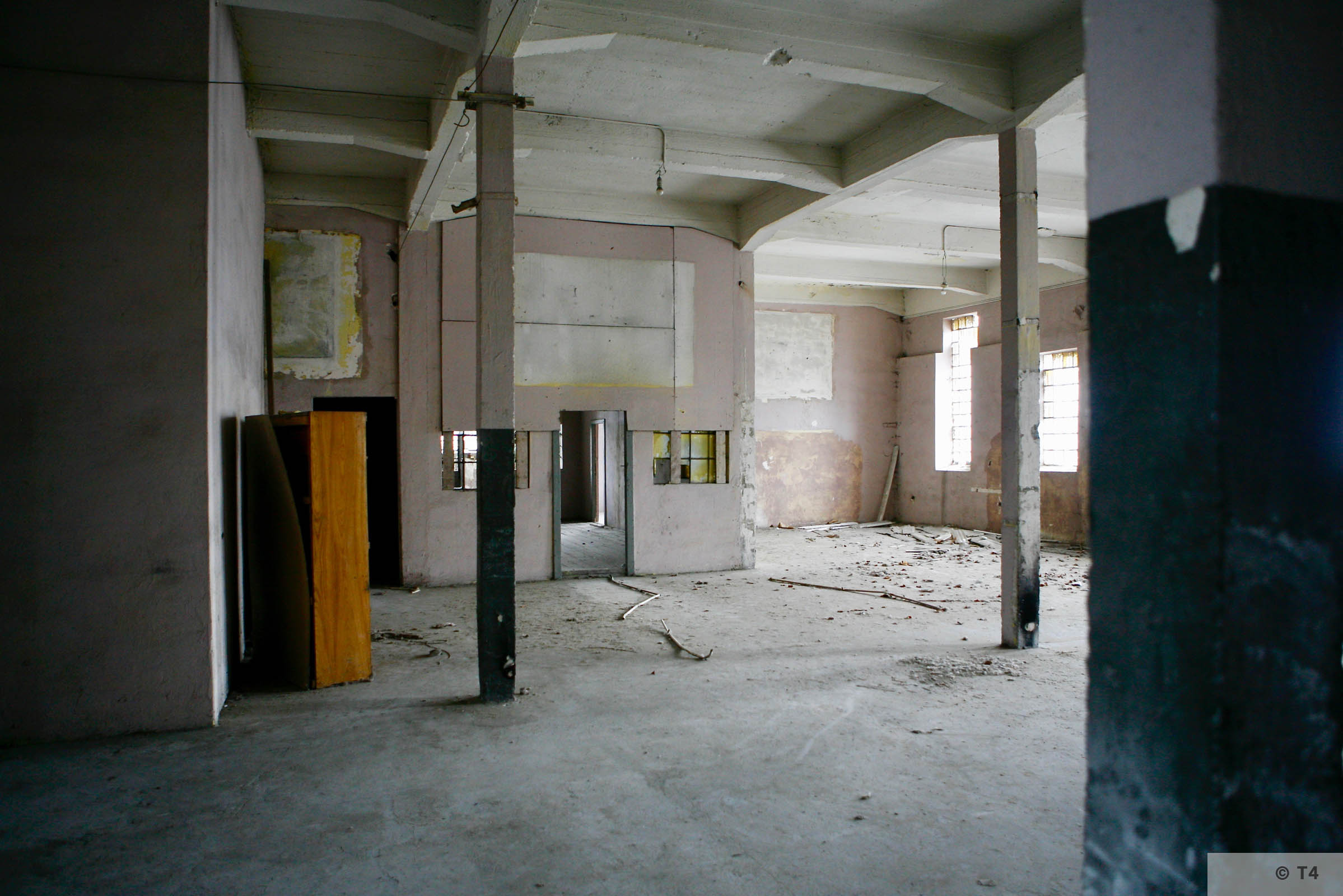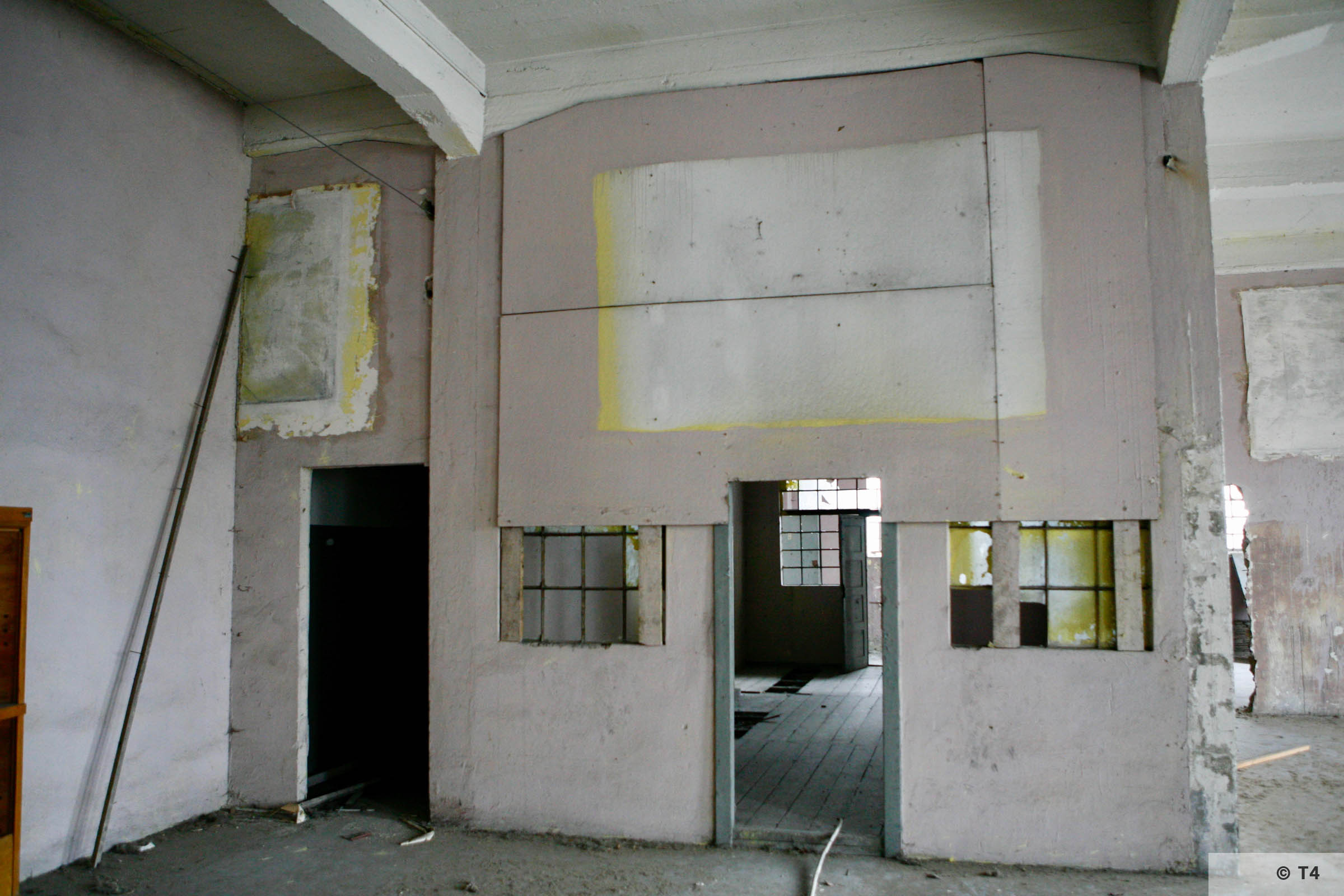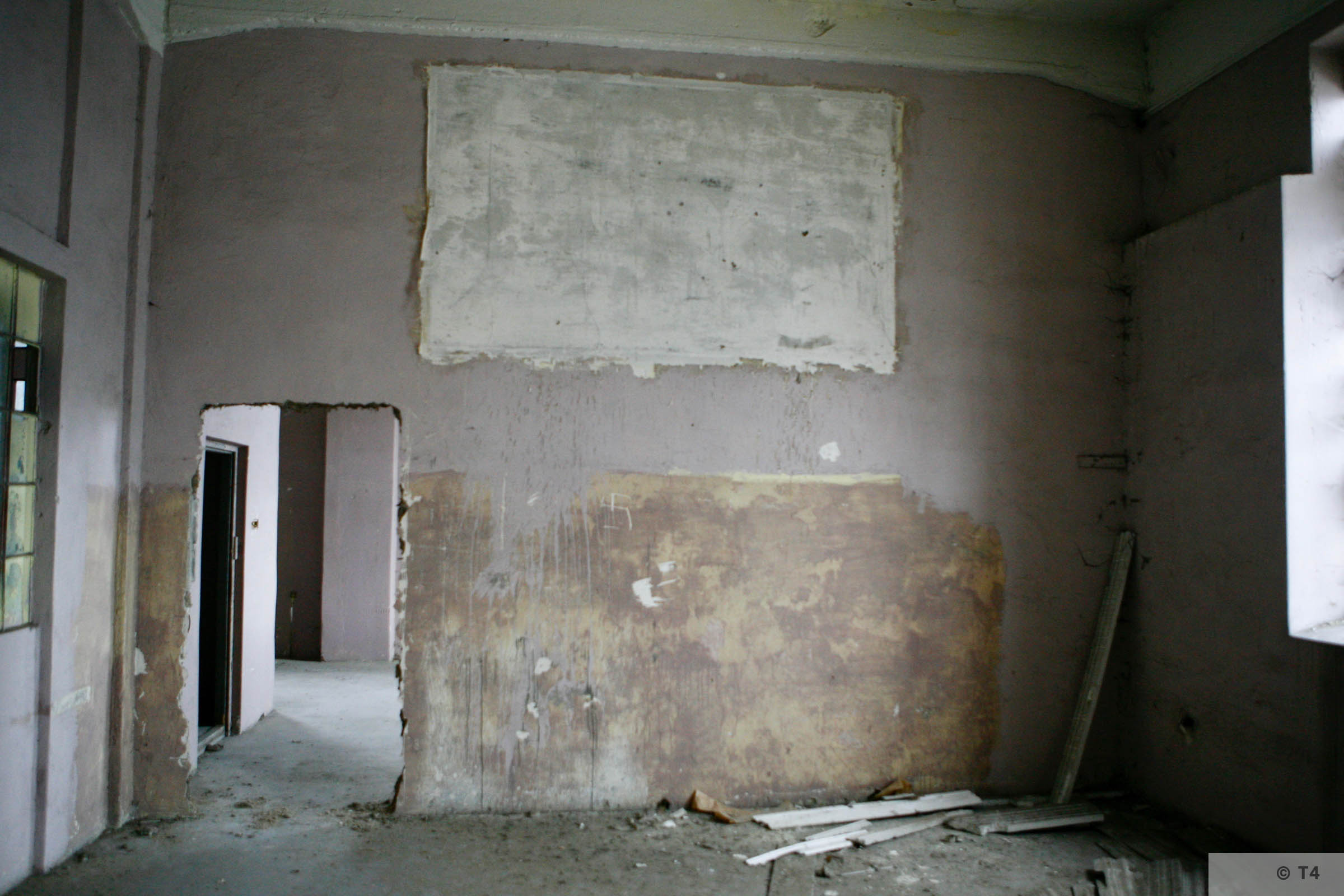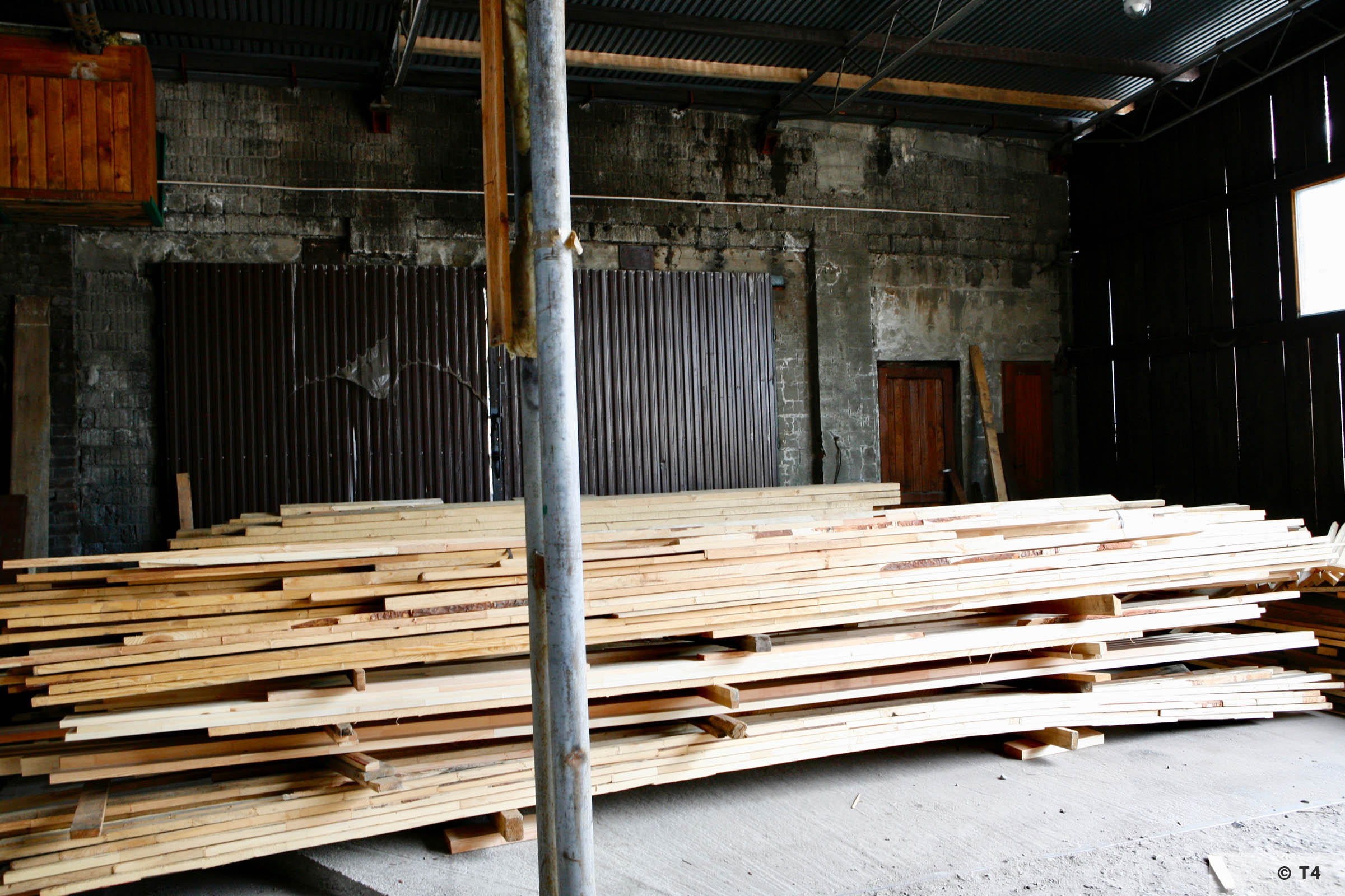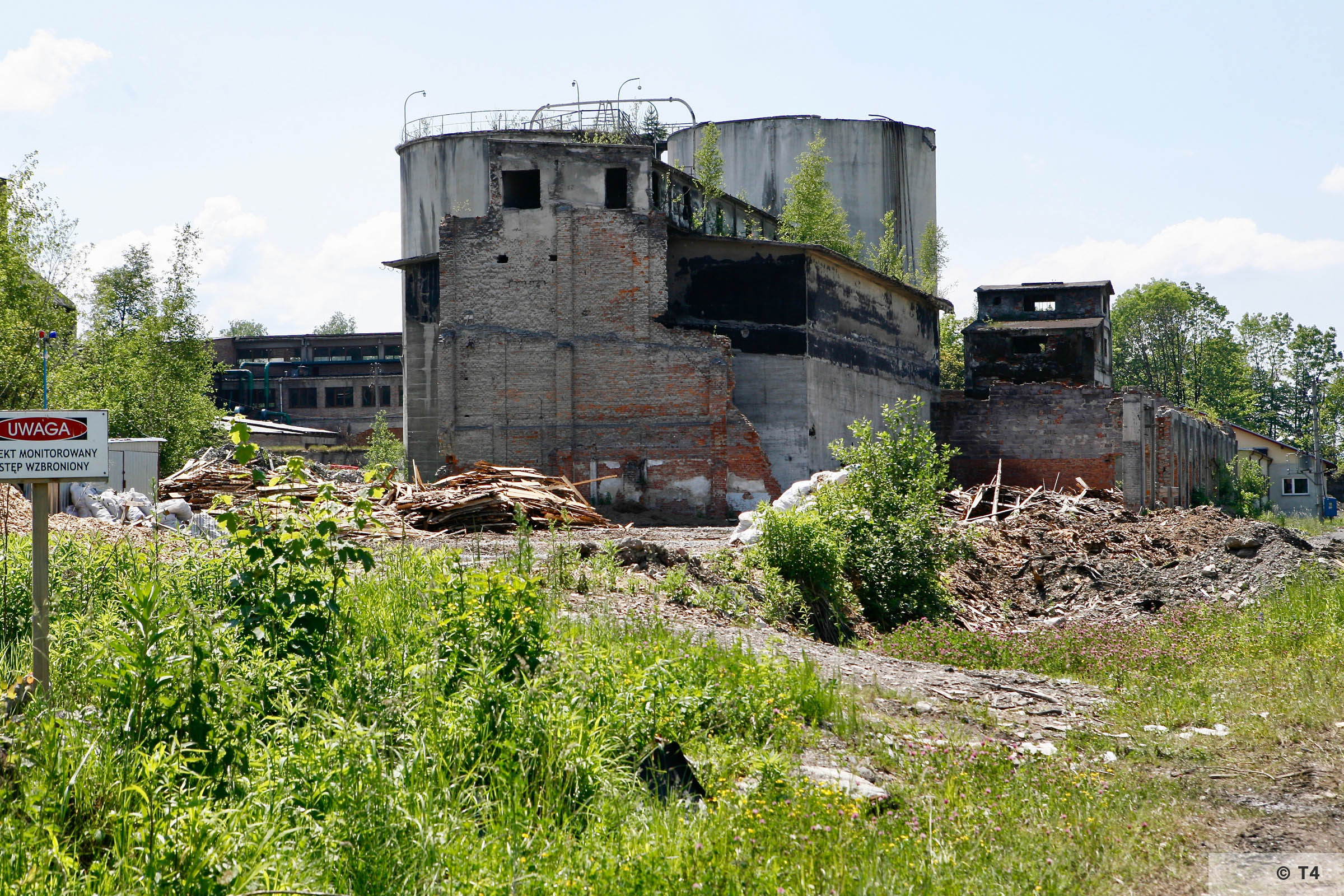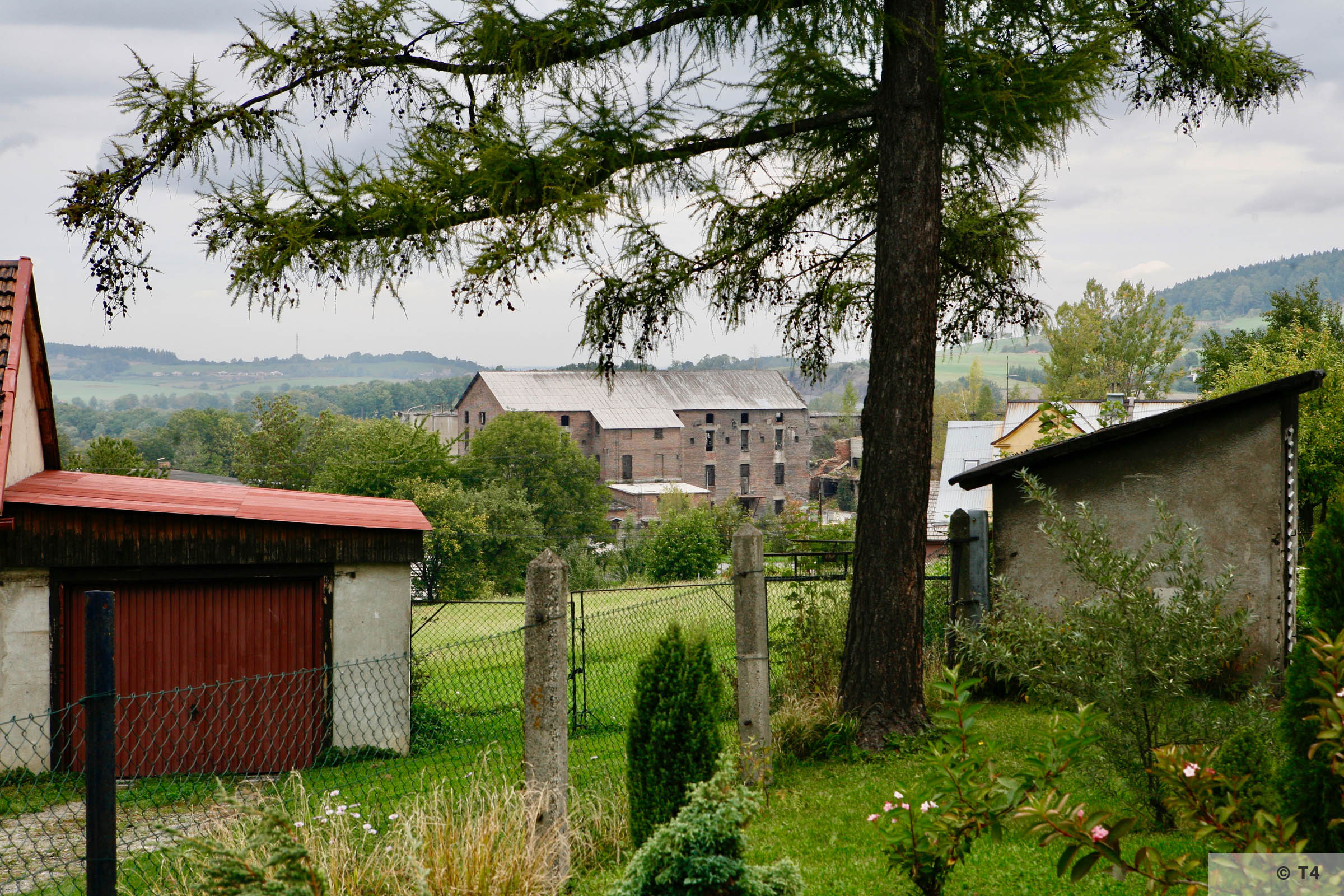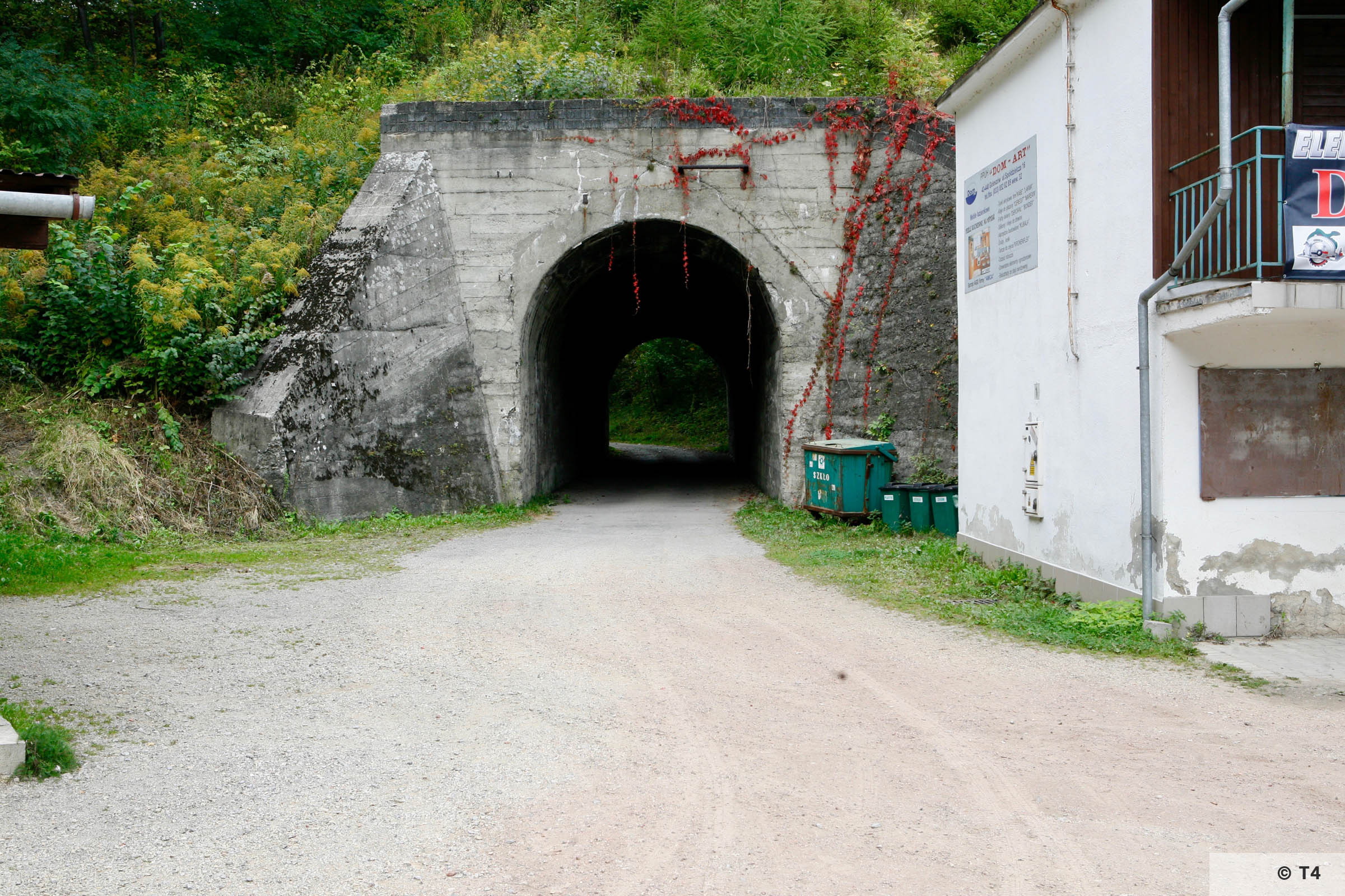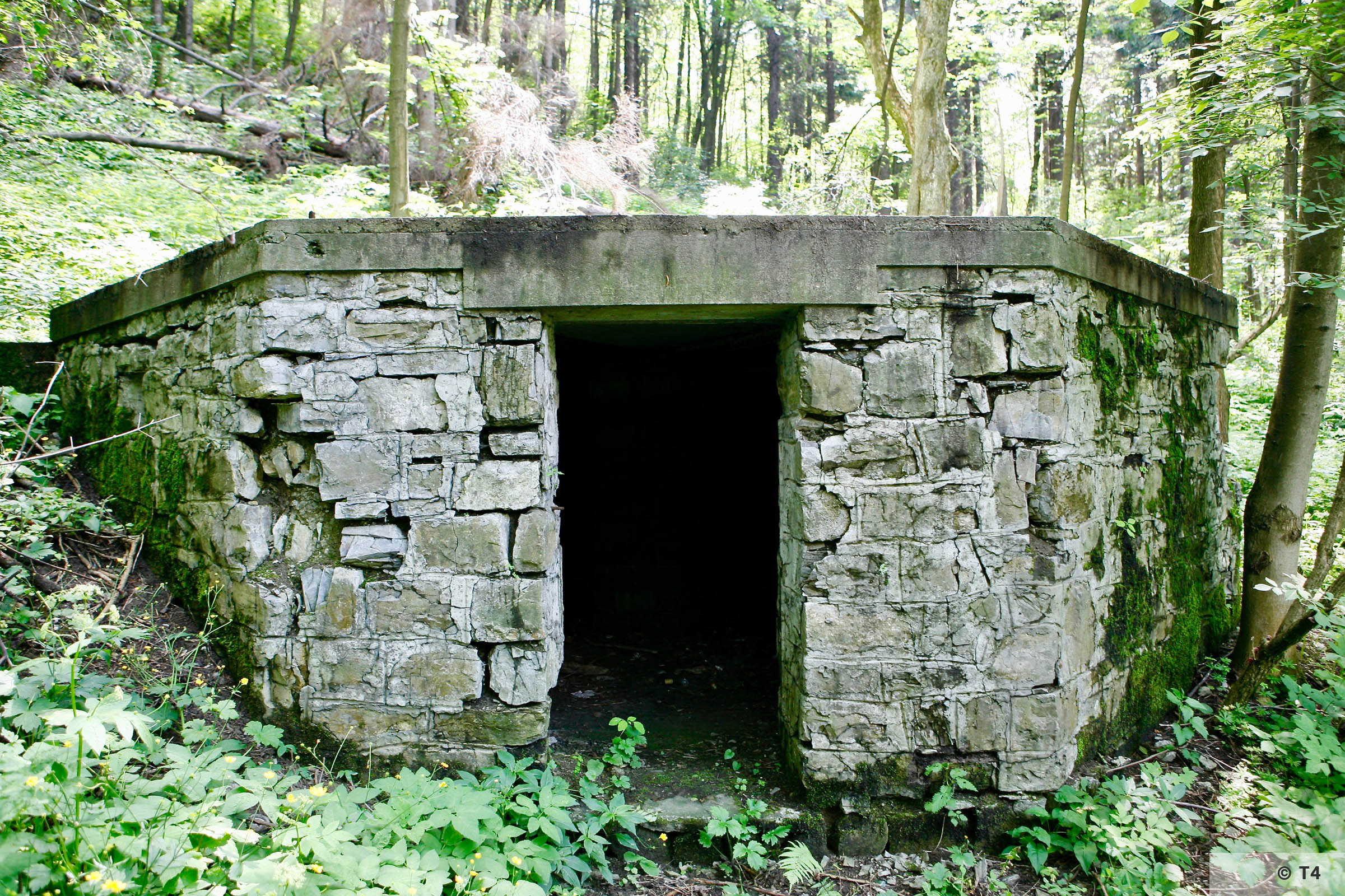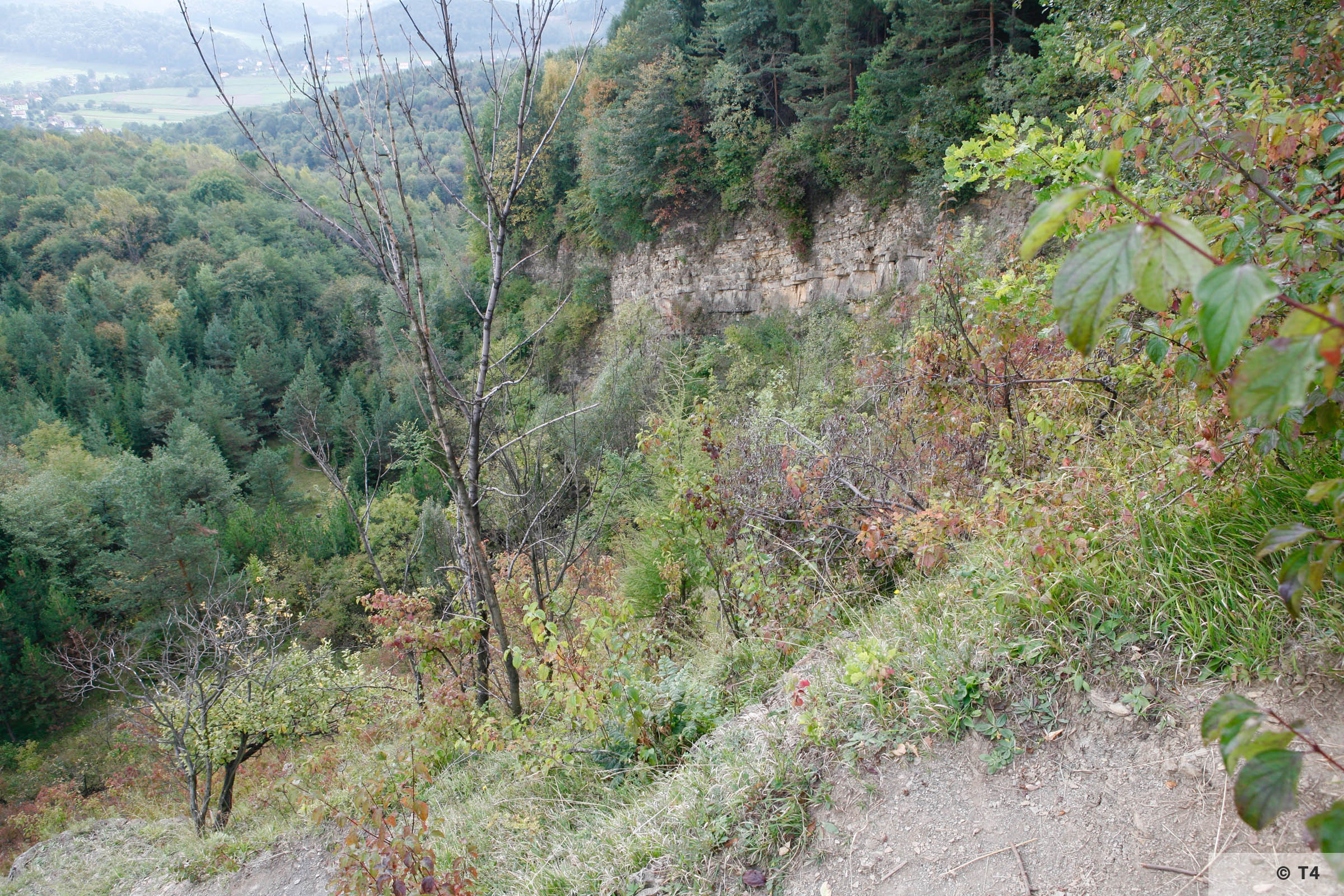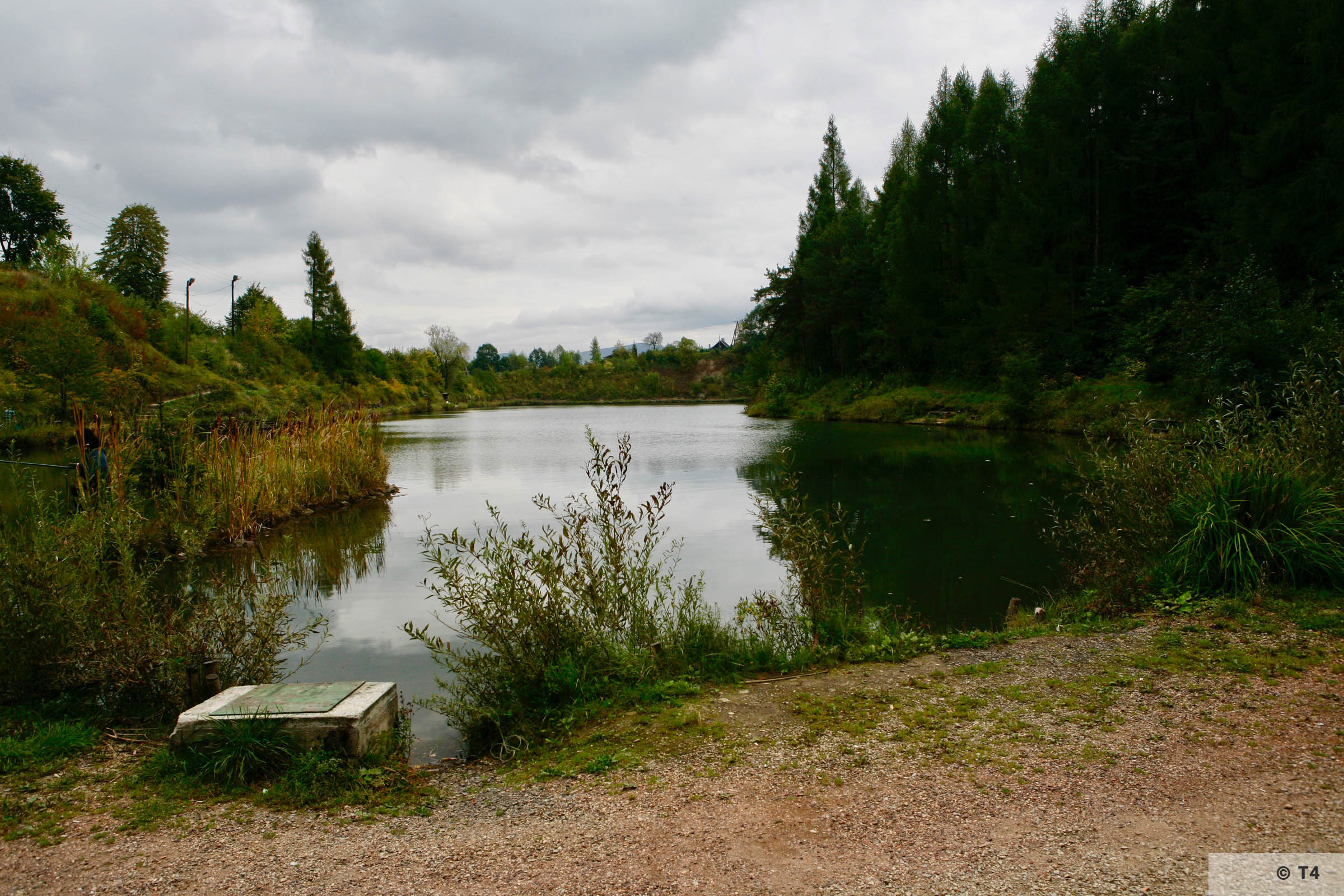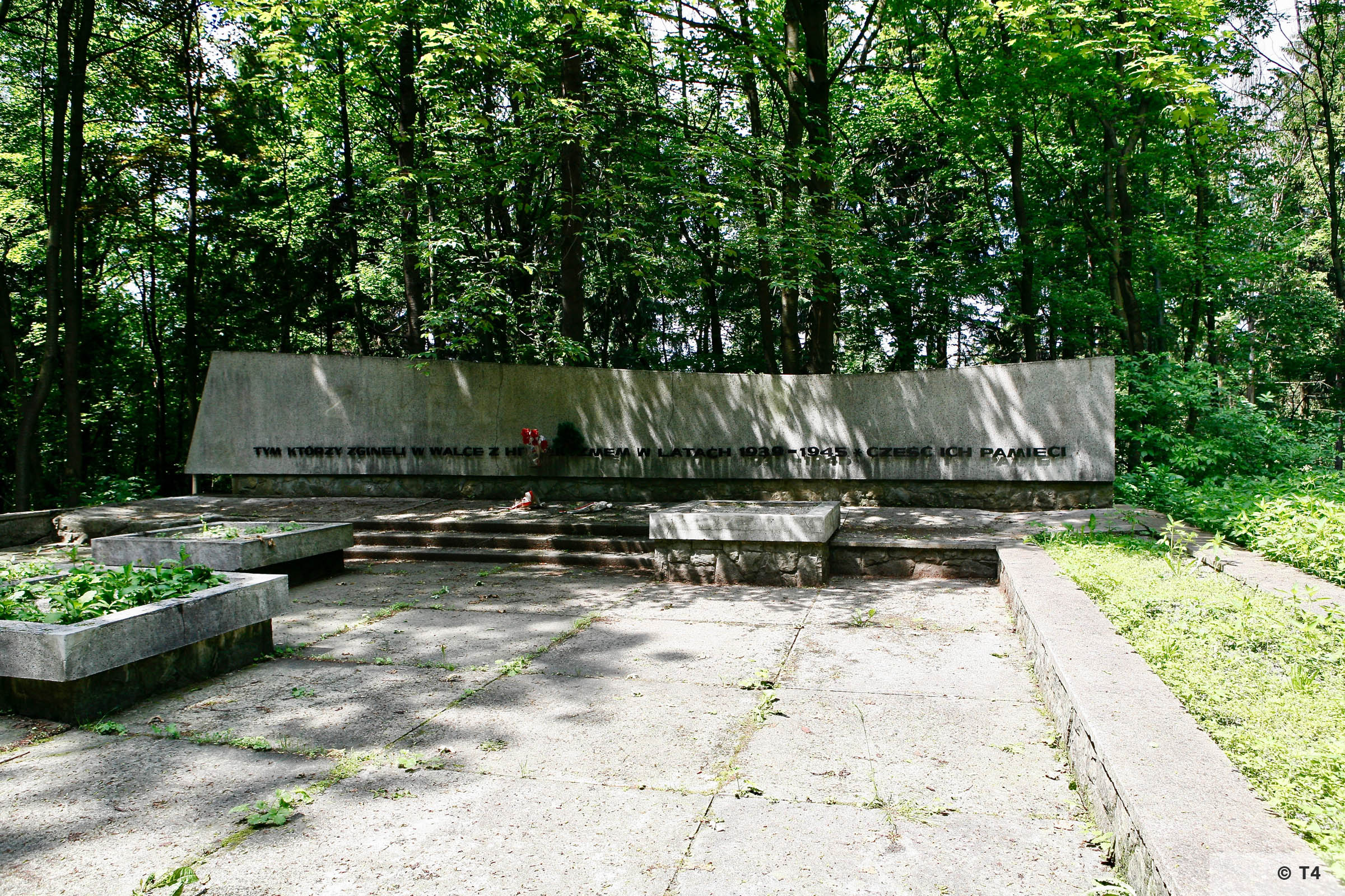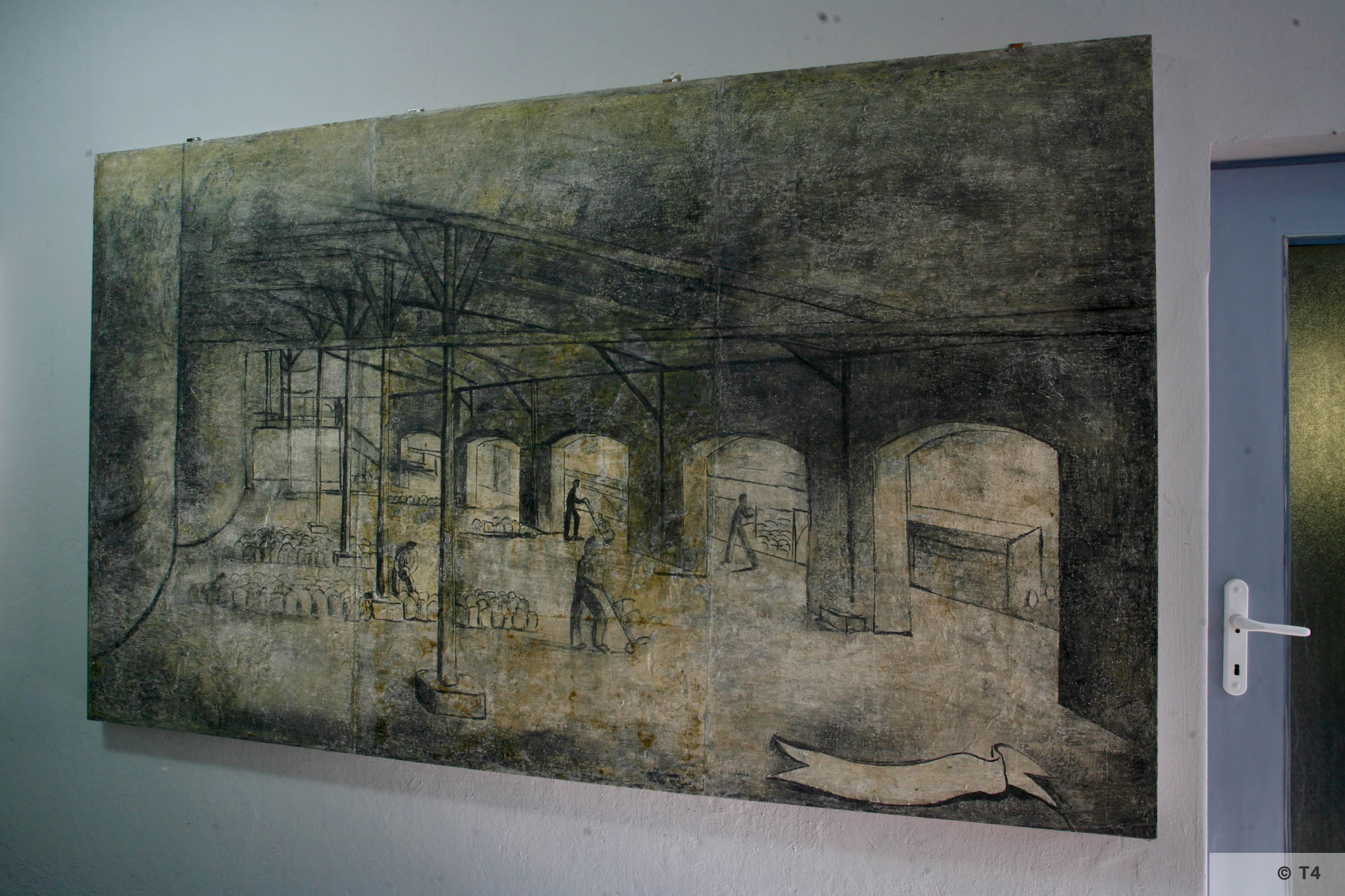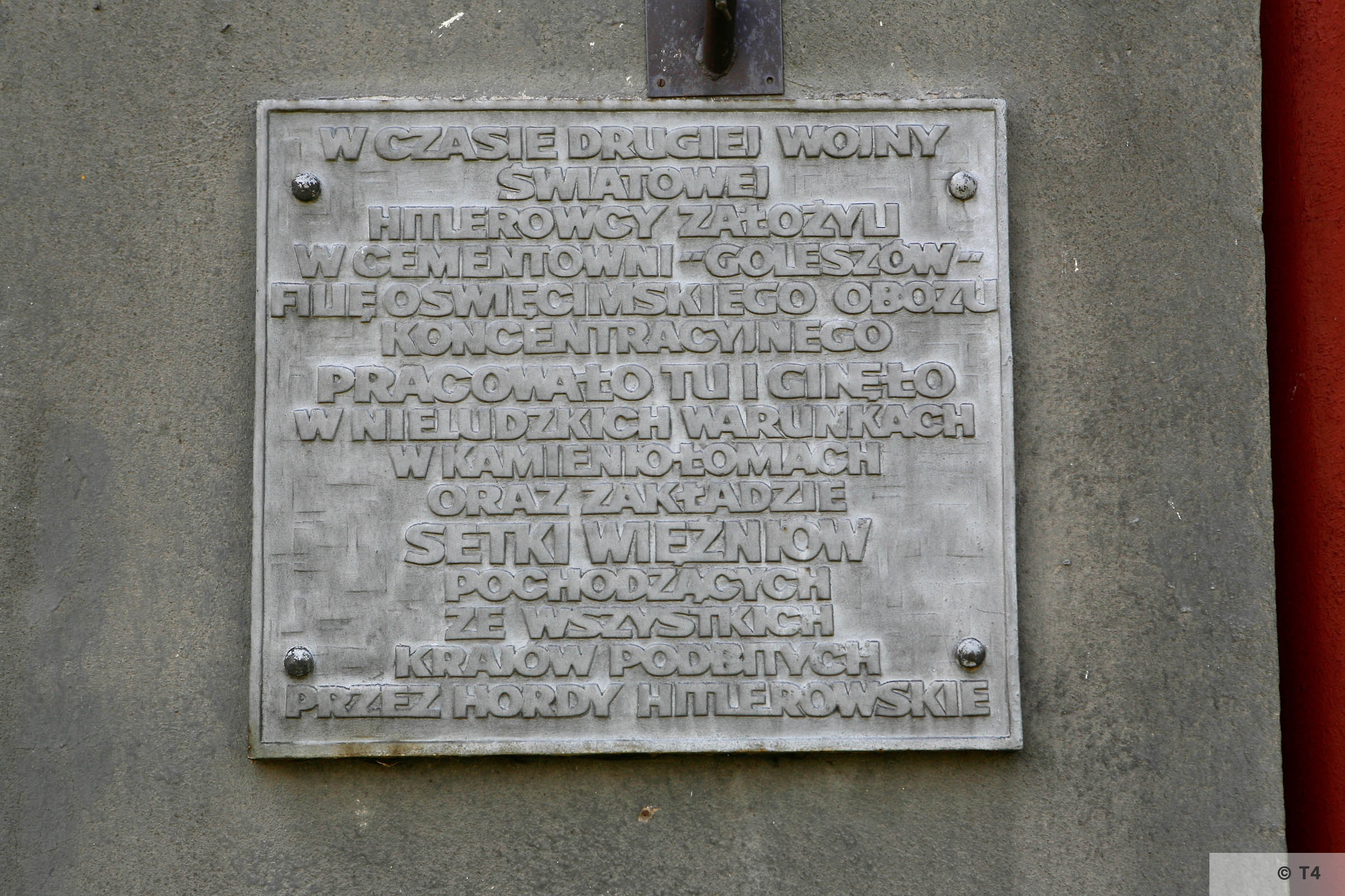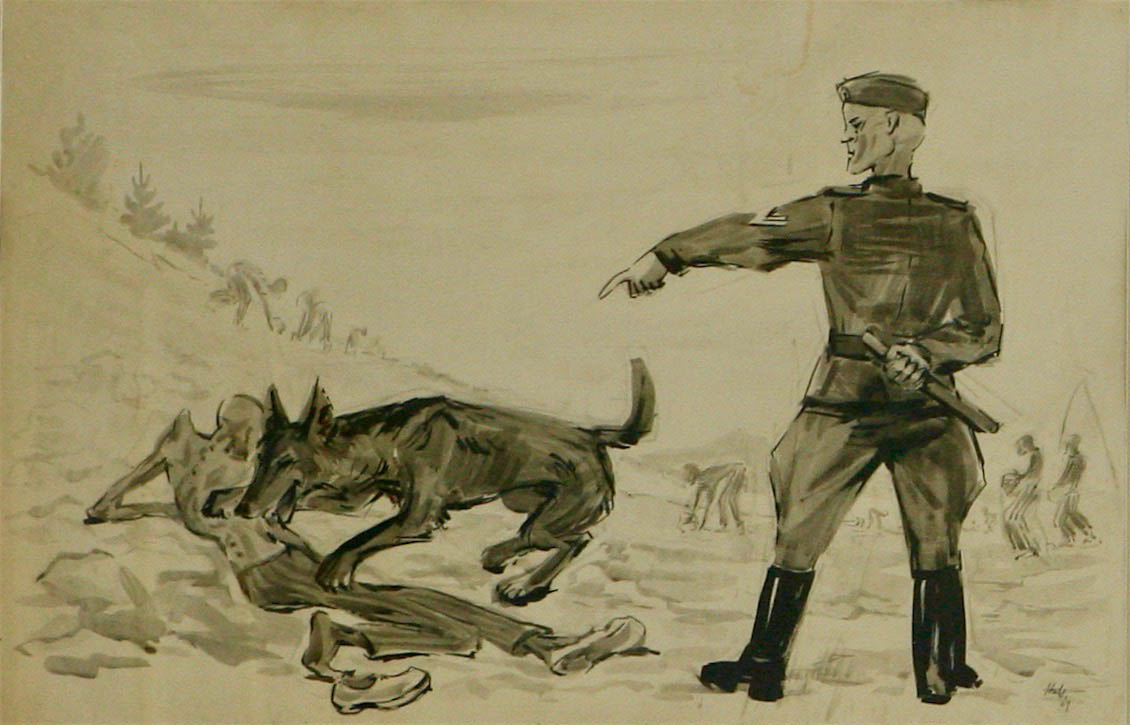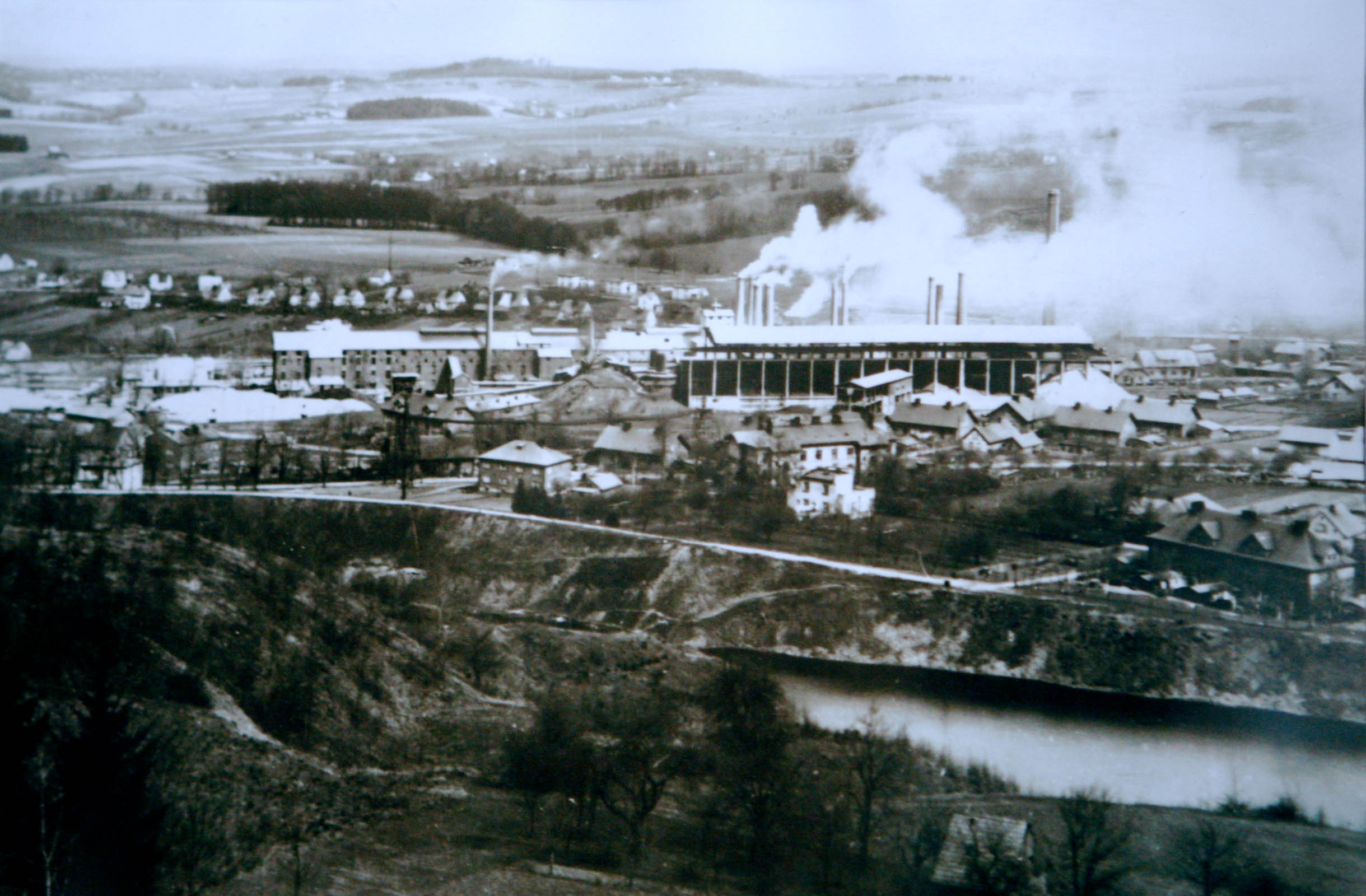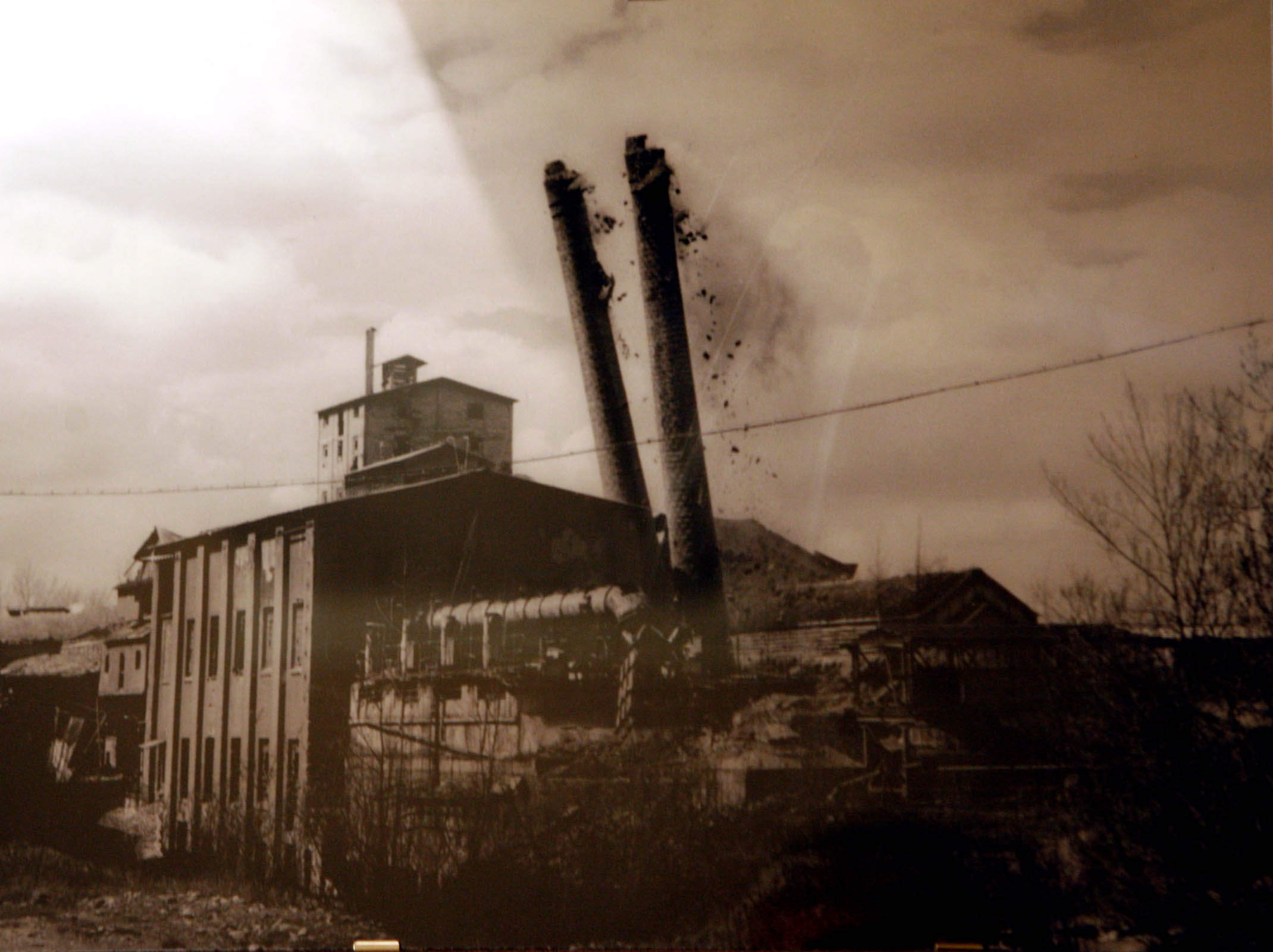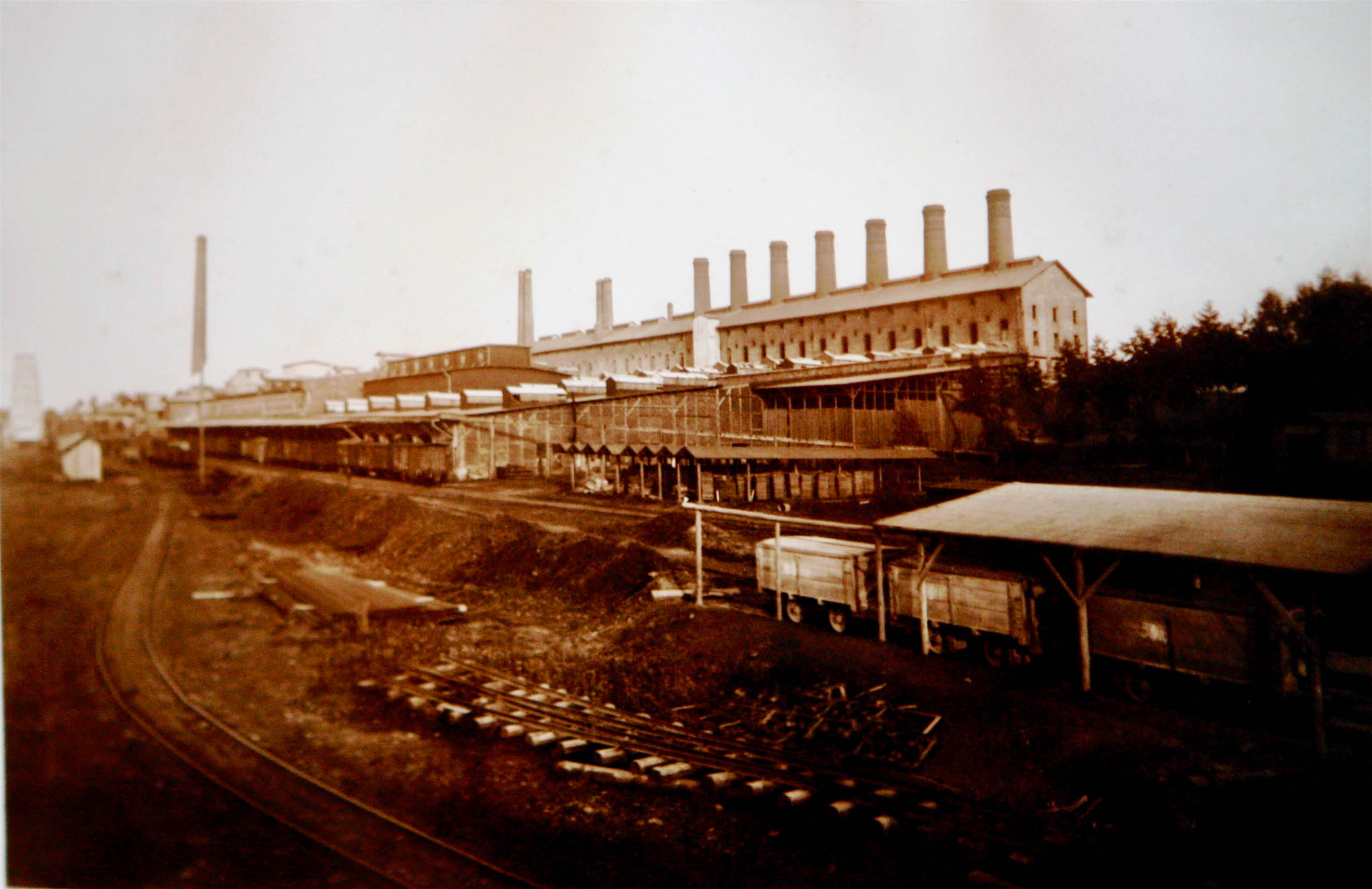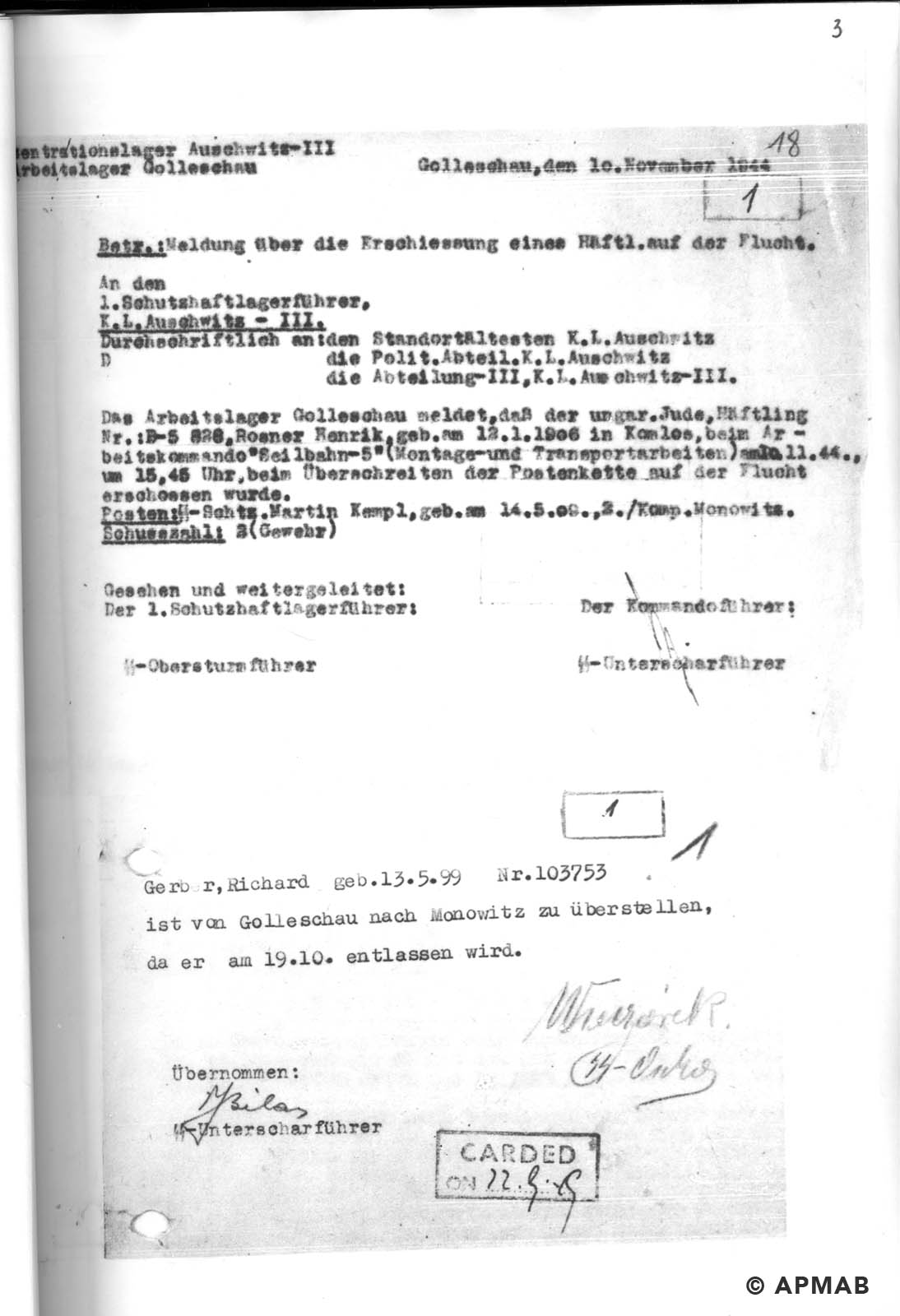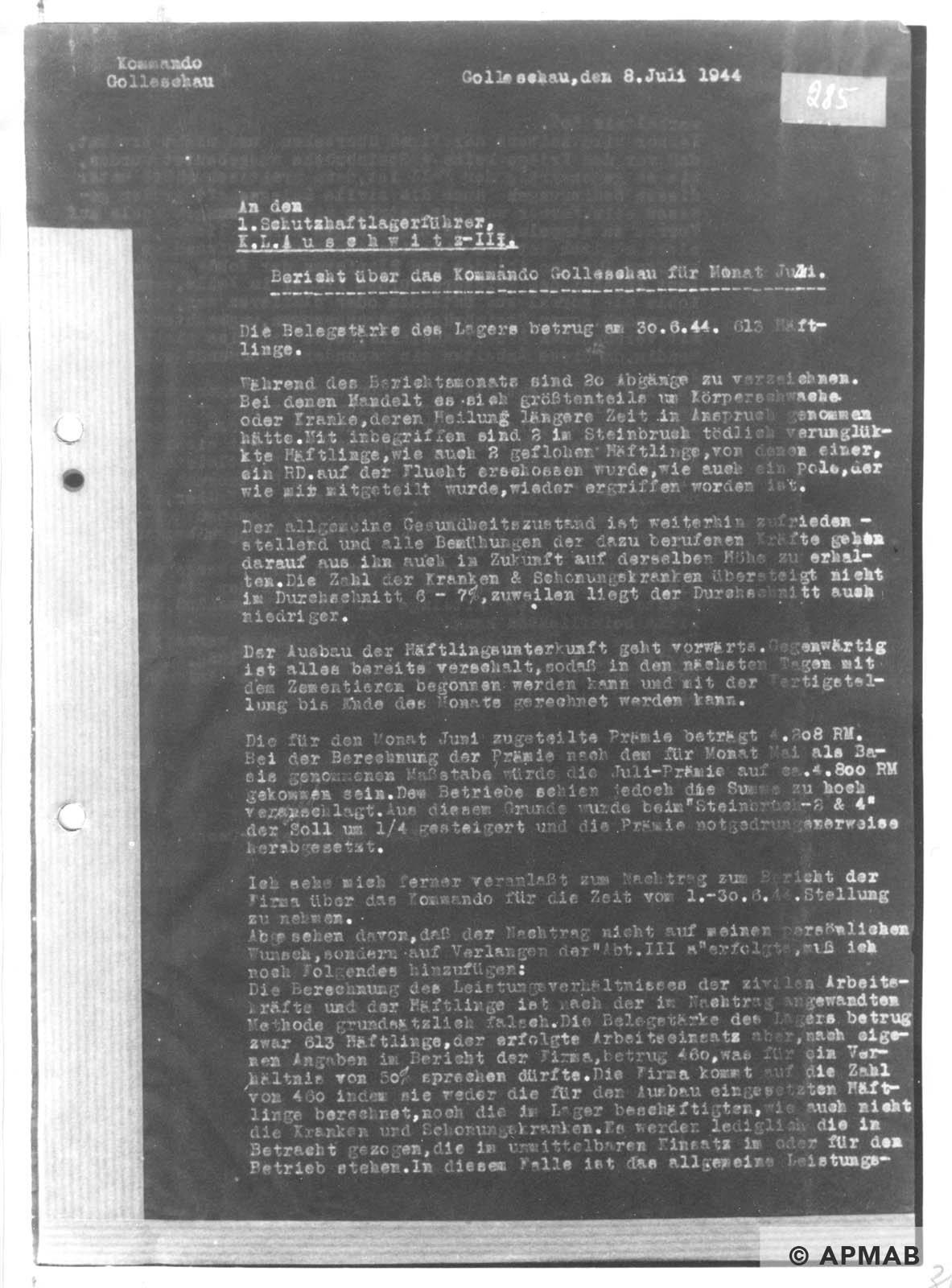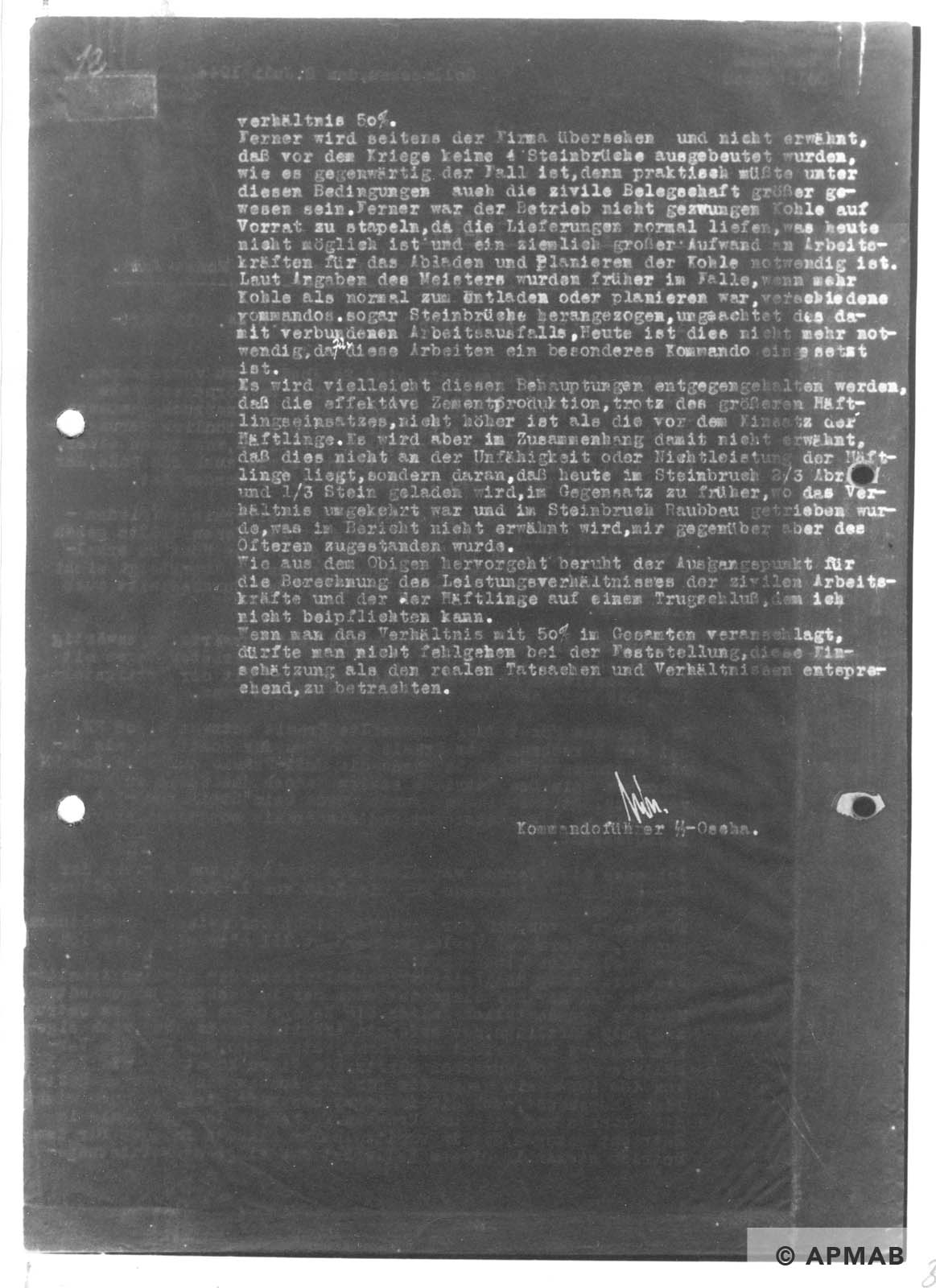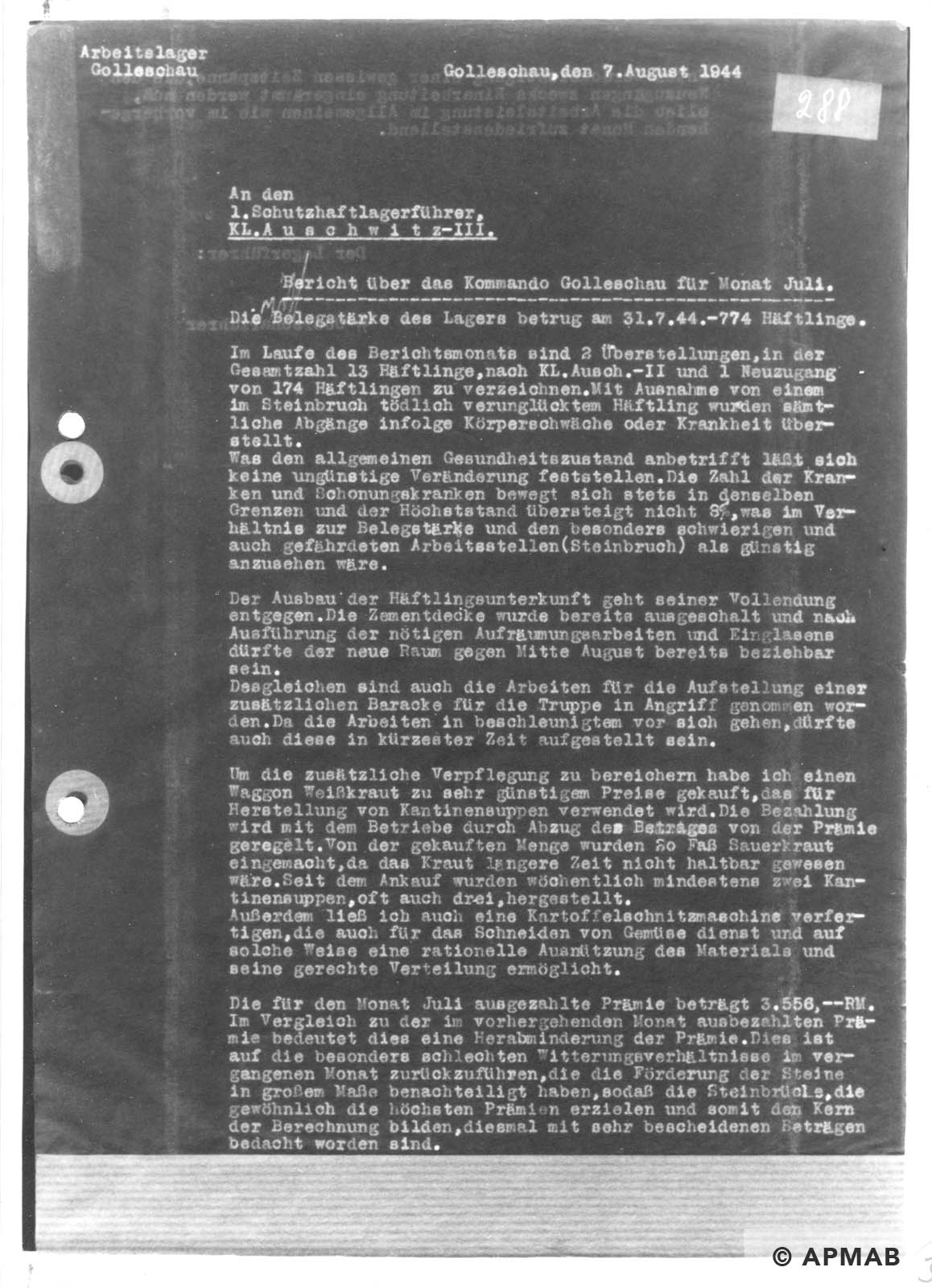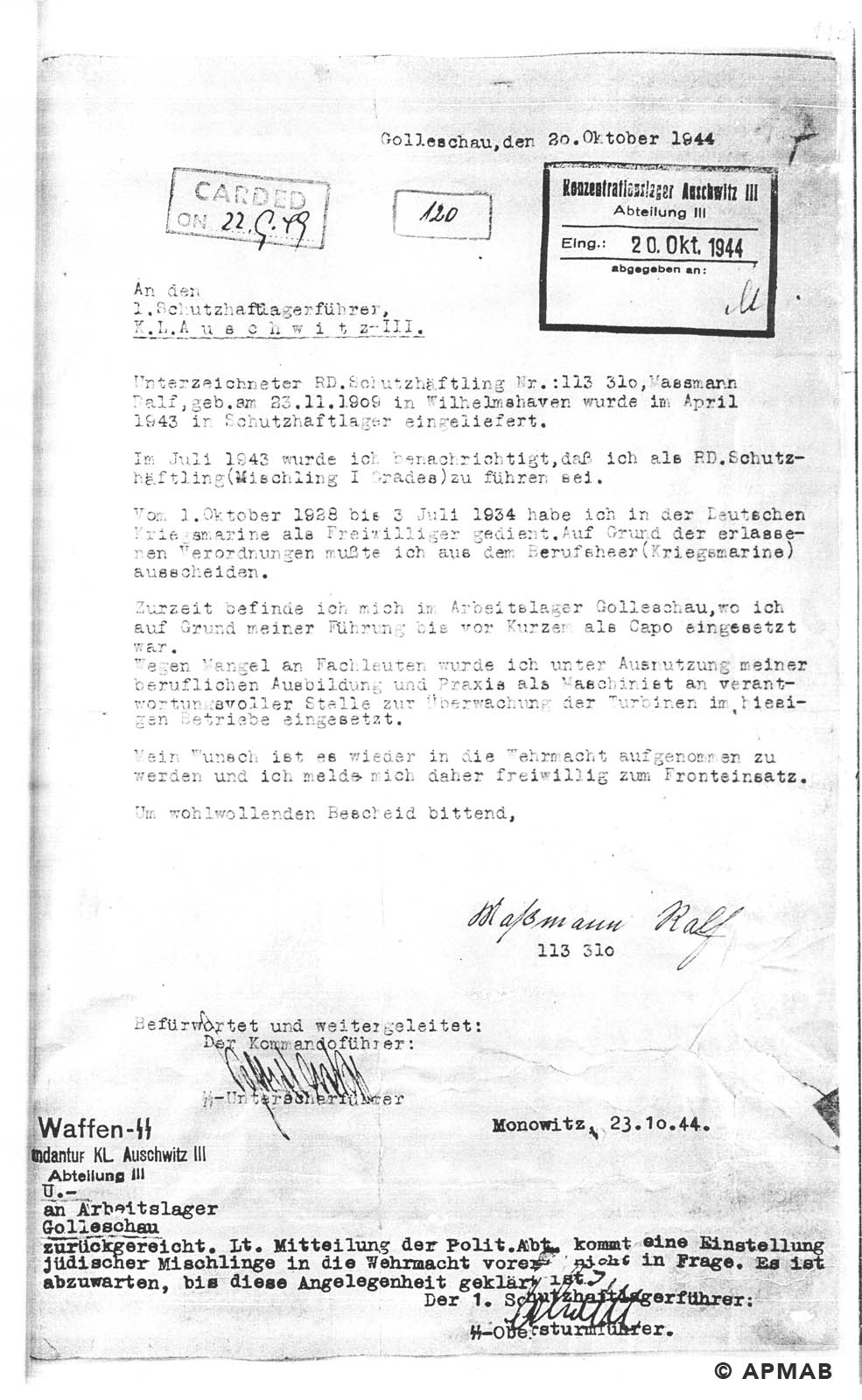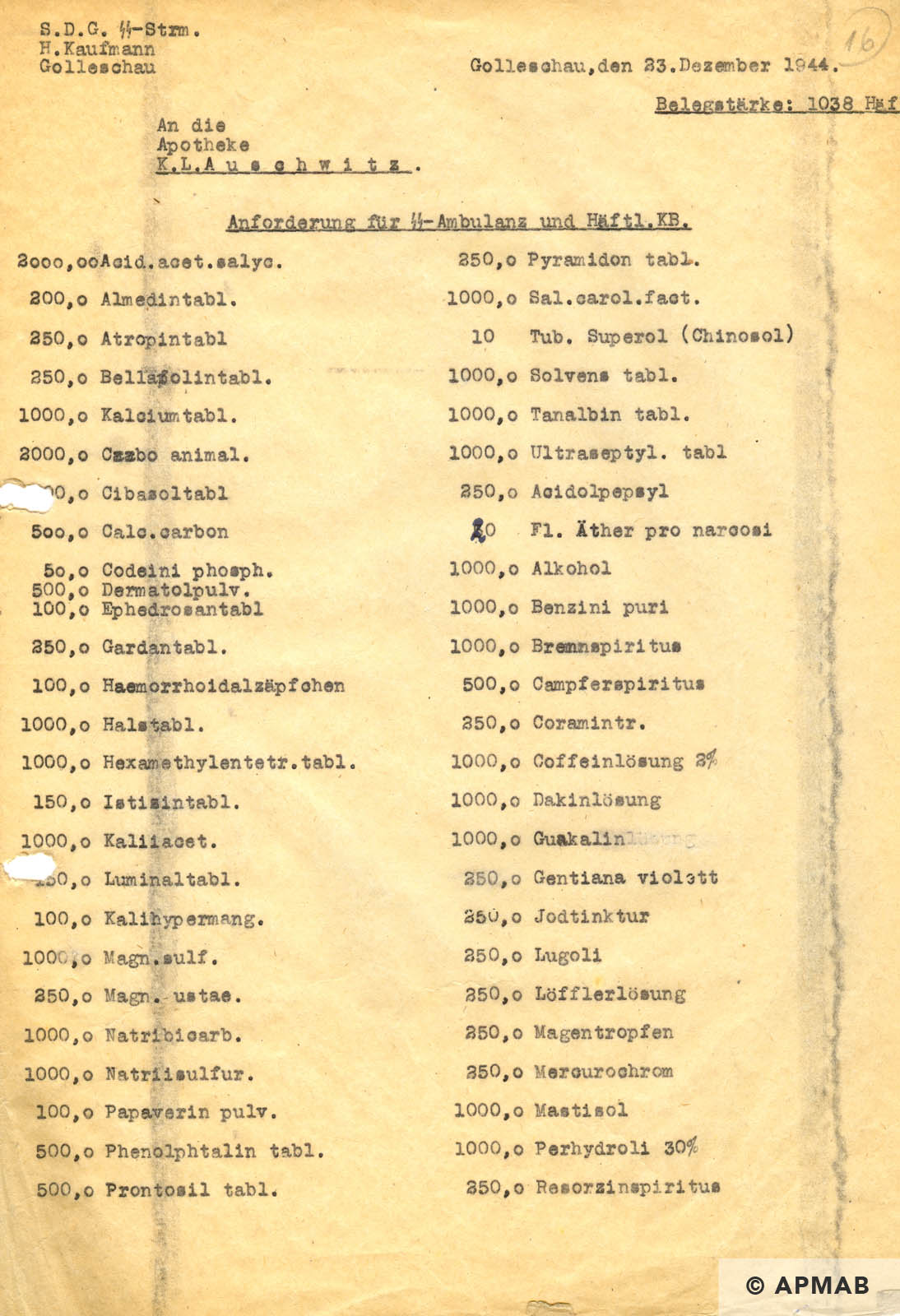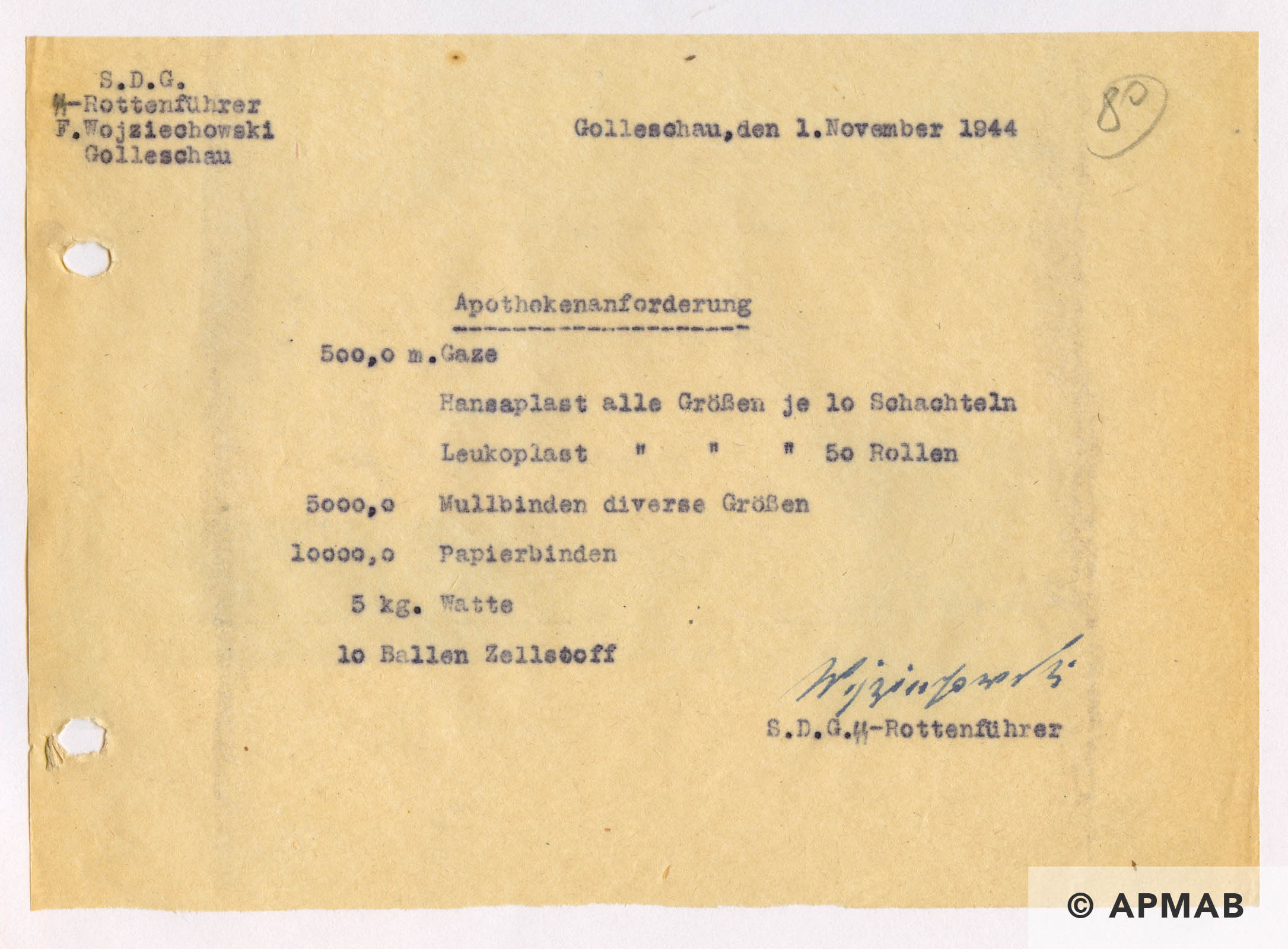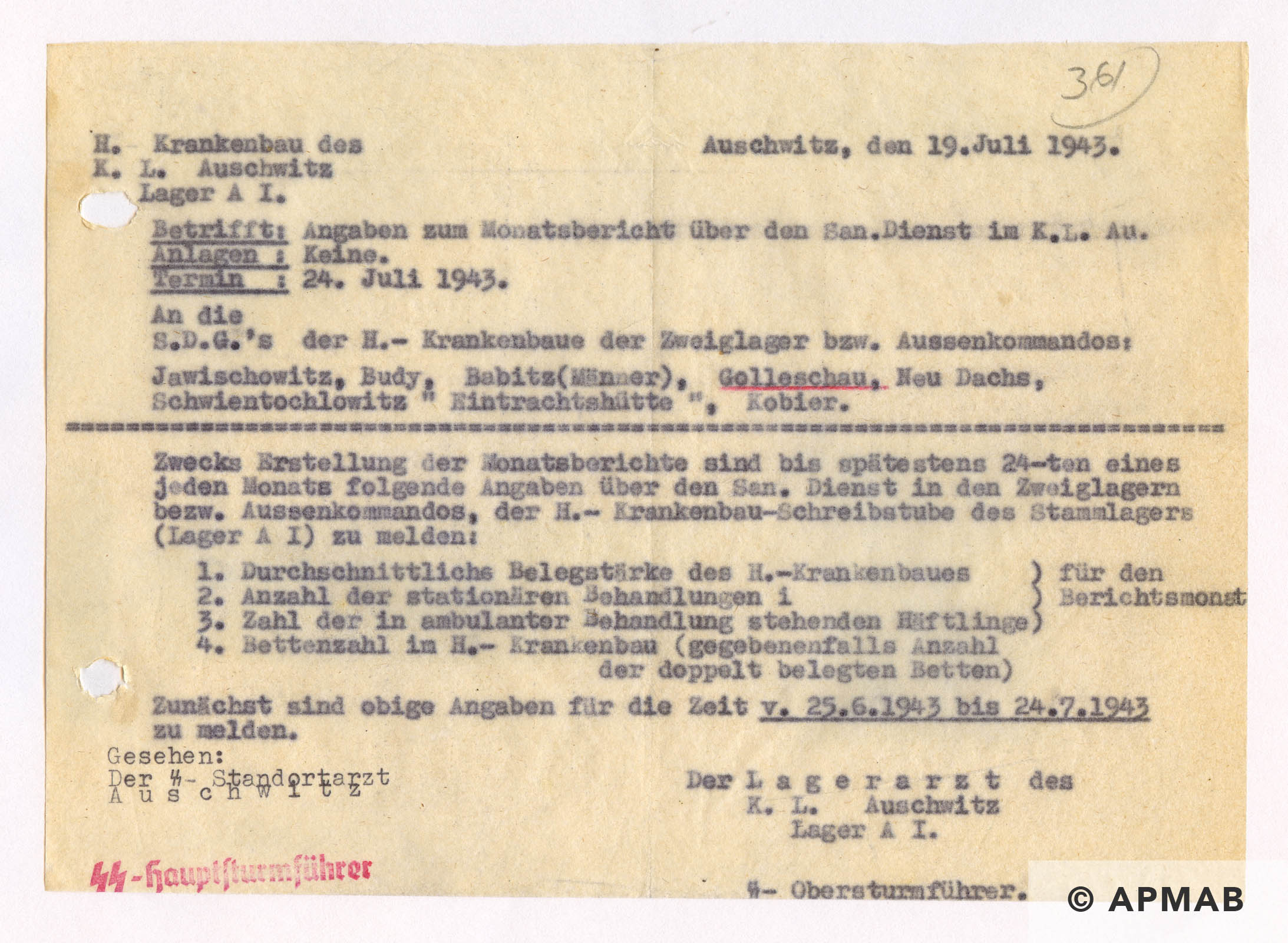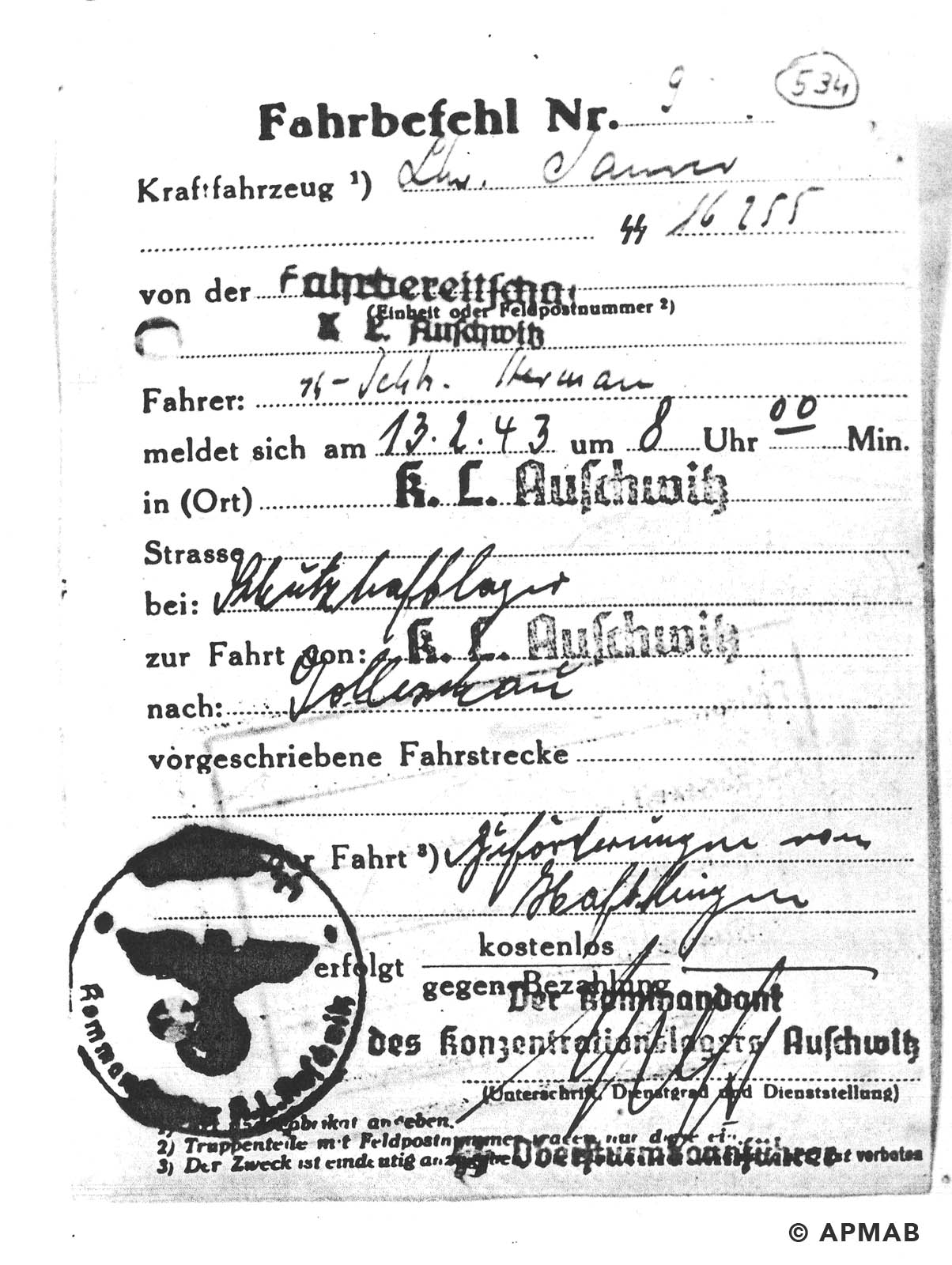Arbeitslager Golleschau
Other Name of the camp
Kommando Golleschau
Zweiglager Golleschau
Commandant of the camp
SS-Oberscharführer Johann Ammering
SS-Oberscharführer Erich Picklapp
SS-Oberscharführer Johann-Josef Mirbeth
SS-Unterscharführer Horst Czerwinski
Number of SS Guards
Approximately 30-40 SS guards in 1943 from 1,2,3,6,7 Wachkompanie Auschwitz. Subsequently total 70 guards in 1944 from the 2nd Wachkompanie Monowitz and former Wehrmacht and Luftwaffe men from the 8th Sentry Company Auschwitz. Germans and Volksdeutsche from Poland, Hungary, Croatia, Romania and Czechoslovakia.
Work type
SS Kommandos: Labouring in an SS owned cement plant.
Employer
Golleschauer Portland-Zementfabrik A.G.
Ostdeutsche Baustoffwerke GmbH Hauptverwaltung Posen
SS-WVHA
Sub camp buildings
The prisoners were accommodated in one of the existing buildings of the cement plant.
Number of prisoners
1008 male prisoners on 17 January 1945.
Nationality of prisoners
Poles and Jews.
Period of camp existence
15th July 1942 – 21st January 1945
Dissolution / Evacuation of the sub camp
18-21 January 1945. On 18 January a group of several hundred prisoners left the camp and marched on foot to Wodzisław Śląskie. There they were loaded onto open rail wagons and taken via Zagan and Frankfurt an der Oder probably to one of the sub camps of Sachsenhausen concentration camp. Other prisoners departed the Golleschau sub camp on January 19, 1945 on foot to the train station in Wodzisław. From there they were transported in rail wagons to the concentration camp at Flossenbürg.
Dates of site visits by Tiergartenstrasse4 Association
June 2006, August 2006, October 2006, March 2007
Memorialisation
The former cement factory administration building stands in the centre of Goleszów on ul Cieszyńska. In this building on the right side is mounted (in 1969) a plaque with an inscription in Polish.
Explore more
The History
The history of the companies and the places prisoners worked, the sub camps, the SS guards and memorialisation of the sites.
The History of the Goleszów Cement Works
Goleszów (German – Golleschau, Czech – Holešov Slezsku) is a small town situated near the railway line linking Bielsko-Biała and Cieszyn. The development of the rural economy occurred in the late nineteenth century when two railway lines were opened Cieszyn – Bielsko and Ustroń – Goleszów. Goleszów then became an important railway junction. In the area of Goleszów were large deposits of limestone and marl, which were mined from the seventeenth century onwards. During the years 1898-1989 lime kilns were erected near the railway line and a cement plant was located in Goleszów. [1]
The first owners were the brothers Goldstein from Breslau and H. M. Flieszbach from Golgau. In 1906, the shares of the company were acquired by the Goleszów Portland Cement Factory SA based in Vienna. The construction of the industrial plants led to a significant influx of people to Goleszów. In the 20 years, between 1890 and 1910 the population almost doubled from 1,334 to 2,434; the cement plant employed about 1,400 workers.
After the Nazi occupation of Goleszów in 1939 there was an immediate transfer of ownership of the cement plant, and an engineer Richard Goebel was appointed by the court administrator to manage it. In 1942 he became director of the cement plant, which was renamed the Golleschauer Portland-Zementfabrik A.G. and was a limited company with capital amounting to 2,000, 000 RM. In addition to the cement plant there were also four quarries. Goebel´s first deputy was Otto Erich and then Anton Perzyna. The head of the cement plant laboratory was engineer Hans Schwarzer and the technical director was Alois Kahler. [2]
The cement plant in Goleszów was subordinate to the Office W II (Ostdeutsche Baustoffwerke GmbH Hauptverwaltung Posen), led by SS-Sturmbannführer Dr. Hans Bobermin. The Office II was part of Economic Office W (Amtsgruppe Wirtschaftsbetriebe), which was managed by SS-Standartenführer Hans Hochberg and from August 1943 by SS-Oberführer Hans Baier. The Economic Office W was subject to direct supervision by the Economic and Administrative Head Office (WVHA), headed by SS-Obergruppenführer Oswald Pohl. Pohl was a member of the supervisory board of the cement plant Goleszów [3]
[1] Frąckiewicz, Jerzy, Podobóz Golleschau, [in:] Zeszyty Oświęcimskie [1965] Nr 9, p. 103-119.
[2] Frąckiewicz, Jerzy, Podobóz Golleschau, [in:] Zeszyty Oświęcimskie [1965] Nr 9, p. 103.
[3] Frąckiewicz, Jerzy, Podobóz Golleschau, [in:] Zeszyty Oświęcimskie [1965] Nr 9, p.103-104.
The Post War History of the Goleszów Cement Works
After World War II, the plant could not be restarted due to staff shortages and the theft of some of the equipment by the Nazis. The plant resumed production on January 5, 1946 after the communist government had nationalized the cement plant. Eleven years later, a decision was made to expand the plant.
In 1984, cement production was discontinued due to the depletion of the local natural resources The plant became a cement transfer and packing plant (it was imported in bulk [“Portland 350”] from the “Strzelce Opolskie” cement plant), and on May 24, 1984, a lime burner.
In 1988, the Council of Ministers chaired by the then Prime Minister decided to close and liquidate the plant due to a significant deterioration in the financial results of the plant, especially after the cessation of cement production. However, as a result of the subsequent auction, the cement plant was handed over on September 1, 1988 to the multi-branch company “Igloopol” from Dębica. A building inspection in the same year found the plant’s production buildings in a catastrophic state.
The cement plant was finally closed on June 30, 1991. All chimneys were demolished (the highest one was demolished on February 26, 1996), the showcase of this factory, town and surrounding area. Some buildings were leased to various investors, others were demolished and the remaining buildings were left as ruins.[1]
[1] https://kolejcieszyn.pl/index.php. Viewed 3 September 2019.
The History of the Sub Camp Arbeitslager Golleschau
The sub camp Arbeitslager Golleschau was founded on 15 July 1942. Initially a Kommando of 12 Polish prisoners were transferred to the cement plant in Goleszów [1] in order to prepare prisoner accommodation in one of the buildings at the plant. The first time the name Golleschau appears in the Auschwitz death book was on August 4, 1942; deceased prisoner number 43486, Elia Rozenwurzel.
The surviving records relating to the sub camp Goleszów named the camp variously as: Kommando Golleschau, Arbeitslager Golleschau and Zweiglager Golleschau.
Initially, the sub camp Golleschau was under the control of Auschwitz I, but from 22 November 1943, as for the other Auschwitz sub camps located at industrial plants it came under the jurisdiction of the commandant of Auschwitz III – Monowitz. [2]
Golleschau sub camp was the only one of the larger Auschwitz sub camps (where the number of prisoners exceeded 1,000), in which no specific buildings or camp was erected to house the prisoners. Wooden barracks were erected for the men of the SS Kommando. The sub camp was located in a two-storey warehouse building, adjacent to production facilities at the plant. Before the arrival of prisoners, the windows were secured, and the building housing the prisoners and a parade ground was separated from the rest of the plant, by an electrified barbed wire fence. Initially, there were not even traditional guard towers, these were only built in 1944, located on each outer side of the fence. On the ground floor of the warehouse building was the prisoners‘ camp kitchen and a small camp hospital. On the first and second floors were large halls, where the prisoners slept. The prisoners slept on three-story bunks, which had been delivered to the camp. On the first floor there were washing and latrine facilities and a separate area for the Kapos. [3]
Prisoners clothing was the same as that used in the Auschwitz main camps and was delivered from Auschwitz to the sub camp in Goleszów. In summer the prisoners wore striped denim and in winter cloth. In the first two years prisoner footwear consisted of clogs, only in 1944 did they begin to receive leather shoes.
Initially, all of the food was brought by truck from the main camps in Auschwitz. Later agricultural products such as potatoes and turnips, and also bread for the camp, were purchased locally in Goleszów. Every morning each prisoner received about 20 grams of bread and half a litre of ersatz coffee or tea with a little sugar. For the bread there was a small amount of margarine or marmalade. At noon during the work break the prisoners were given turnip soup and bread and for dinner sometimes a slice of sausage.
Karel Adler a former prisoner described the work in the quarries and the inadequate diet and clothing, “We had (in Golleschau) very bad food, absolutely not enough to live on. Early (before work) we only received a small amount of bitter coffee and then we went to work in the quarry. To the quarry was about 3-4 km and we walked on foot. The work ended between 14.00 and 16.00 hrs depending on when the required 5 wagons had been filled with stones. Then we could return to the camp where we received a litre of thin cabbage soup. For dinner two men shared ¼ of a loaf of bread. I don’t know whether it was a one or two kg loaf of bread. In addition, we received a piece of margarine or marmalade. Given the heavy work this food was absolutely insufficient. The men died from weakness and bad treatment. We had absolutely insufficient clothing. In winter we worked in light clothing and almost barefoot. At night we were chased onto the roll call area where we stood in the cold for two hours and we were not allowed to warm ourselves. The men fell over unconscious. And the most terrible thing was the harsh treatment, partly from the SS guards and partly from the so called Kapos and foremen. The SS guards had guns, also large sticks as did the Kapos that they beat us with. We were beaten for no reason.” [4]
The prisoners worked in different Kommandos in the cement plant, and elsewhere. The hardest work of all was in the quarries, which had two shifts from, 4.00 hrs to 12.00 hrs and from 12.00 hrs to 19.00 hrs. On Sunday, there was only one shift from 4.00 hrs to 12.00 hrs. The prisoners working in the quarries loaded excavated stone onto the railway wagons and were made up of 4 Kommandos: Steinbruch I, II, III and IV. The latter detachment (Steinbruch IV) was a Strafkompanie, and because the work was the hardest, this is where most of the fatal accidents happened. [5]
Another former prisoner Gejza Rinder, “I remember hearing in the camp about the workers in the quarry who had their hands broken or other wounds inflicted by the dogs set on them by the SS personnel. I myself only saw the covered bodies of such workers being brought back from the quarry.” [6]
In addition, there were other Kommandos that were engaged in various works in the cement plant itself:
- Construction of railways (Streckenbau und Gleisbau) – two shifts,
- Preliminary grinding of the quarried stone (Vorbrecher) – two shifts,
- Screening out of the carbon (Kohlensieb) – three shifts,
- Packing cement bags (Packerei) – two shifts,
- Kommando carpenter (Zimmerei) – one shift,
- The squad working at the lime kilns (Kalkofen) – three shifts,
- Installation works for the cable car (Seilbahn-und Montage Transportarbeiten),
- Removing the remnants of the process and slag (Schlackenkommando),
- The construction of the cement barrels (Fassenmacher).
The most dangerous work in the cement plant was the packing of cement bags by the Packerei Kommando as lime dust caused pneumoconiosis. A small number of the prisoners worked in the sub camp kitchen, laundry and storage areas. The work of these Kommandos was among the lightest for the prisoners [7]
The death rates from the physically demanding work was catastrophic, especially the work in the quarry. Karel Adler a former prisoner estimated that approximately 100 prisoners were dying every month. The dead prisoners were replaced with new prisoners from Auschwitz. [8]
There was a very basic camp hospital in the sub camp opened in 1943. The work in the Golleschau for sub camp prisoners was especially harsh and they soon became weak and fell ill. Severe cases were sent back to Auschwitz to be gassed. Almost every day at mid-day arrived a truck from Auschwitz to collect the dead and ill from the Golleschau sub camp. There is also evidence that ill prisoners were killed in the prisoner hospital using phenol injections. [9]
[1] They were: Michał Kruczek (No 218), Paweł Balura (No 1329), Aleksander Masłowicz (No 4915), Piotr Maroszek (No 6433), Stefan Garbacki (No 11226), Zygmunt Dusza (No 18191), Tadeusz Zimnowłocki (No 18682), Alojzy Dombau (No 22459), Jerzy Kosarowski (No 38159), Jan Grajek (No 39199), Józef Śliwa (No 39239) and Ignacy Fraczkowski (No 39563).
[2] APMAB. D-AuI-1/Standortbefehl Nr 53/54.
[3] Description of the sub camp Golleschau contained in the Auschwitz-Birkenau State Museum archives and the findings of Tiergartenstrasse4Association upon examination of the former sub camp in Goleszów in 2006 and 2007.
[4] BA Ludwigsburg B162/8949, p. 326.
[5] Frąckiewicz, Jerzy, Podobóz Golleschau, [in:] Zeszyty Oświęcimskie [1965] Nr 9, p. 107-108.
[6] BA Ludwigsburg B162/8949, p. 333.
[7] Frąckiewicz, Jerzy, Podobóz Golleschau, [in:] Zeszyty Oświęcimskie [1965] Nr 9, p. 108.
[8] BA Ludwigsburg B162/8949, p. 326.
[9] Frąckiewicz, Jerzy, Das Nebenlager Golleschau, [in:] Hefte von Auschwitz [1966] Nr 9, p. 63-66.
Literature:
Frąckiewicz, Jerzy, Das Nebenlager Golleschau, [in:] Hefte von Auschwitz [1966] Nr 9, p. 57-74.
Frąckiewicz, Jerzy, Podobóz Golleschau, [in:] Zeszyty Oświęcimskie [1965] Nr 9, p. 103-119.
The SS Guard Unit
The Golleschau sub camp Lagerführer were successively: SS-Oberscharführer Emmering SS-Oberschaführer Picklapp, then SS-Oberschaführer Johann-Josef Mirbeth and finally SS-Unterscharführer Horst Czerwinski. SS-Unterscharführer Josef Klehr was deputy to Picklapp. The Arbeitsdienstführer was SS-Unterscharführer Köhler. The leader of the sub camp hospital were successively: SS-Oberscharführer Herbert Scherpe, SS-Rottenführer Hans Nierzwiecki, SS-Rottenführer Franz Woyziechowski, SS-Sturmmann H. Jorrs and SS-Sturmmann H. Kaufmann. The Golleschau sub camp guard unit consisted of about 40 SS men in 1943.[1] By 1944 the guard unit consisted of 70 SS men. [2]
The Lagerälteste were successively Alois Dombal (or Dombau), Michael Eschmann and Josef Kierspel. Kierspel was sentenced by a court in Bremen to life imprisonment on 27 November 1953. The Kapos were mainly German prisoners.
[1] Frąckiewicz Jerzy, Das Nebenelager Golleschau, [in:] Hefte von Auschwitz [1966] Nr 9, p. 61 and 65.
[2] BA Ludwigsburg B162/ 8952, p. 202.
Literature:
Frąckiewicz, Jerzy, Podobóz Golleschau, [in:] Zeszyty Oświęcimskie [1965] Nr 9, p. 103-119.
The SS Guards
References:
BA Ludwigsburg B162/2680, B162/2679 and B162/8949, p 369-373. Many of the SS guards from Arbeitslager Golleschau were categorised as Jawischowitz/Golleschau on the listing of SS personnel. It is not clear whether these guards served in one or both of these camps. We have categorised these guards as serving in both Golleschau and Jawischowitz.
Rudorff, Andrea, Gleiwitz III (Gliwice) in Des Ort des Terrors Band 5, Geschichte der Nationalsozialistischen Konzentrationslager. C.H.Beck 2007, p. 232-233.
Frąckiewicz, Jerzy, Das Nebenelager Golleschau, [in:] Hefte von Auschwitz [1966] Nr 9, p. 65.
Zppw-auschwitz.pl Zwiazek Polaków Pomordowanych w Auschwitz. List of 8,500 SS men in KL Auschwitz.
IPN database of Auschwitz SS guards. https://truthaboutcamps.eu/th/form/60,Zaloga-SS-KL-Auschwitz.html.
The Evacuation of the Sub Camp Arbeitslager Golleschau
The evacuation of the sub camp Golleschau took place on 18, 19 and 21 January 1945. On the evening of January 18, 1945, a group of several hundred prisoners were formed into columns and marched on foot to Wodzisław Śląski . There they were loaded onto open rail wagons and transported via Zagan and Frankfurt an der Oder probably to one of the sub camps of Sachsenhausen near Berlin, where they remained until liberation by the Soviet Red Army.
Other prisoners departed the Golleschau sub camp on January 19, 1945 and were marched on foot to the train station in Wodzisław. From there they were transported on rail wagons to the concentration camp at Flossenbürg, from where some were sent to one of the sub camps of Dachau.
The 100 remaining prisoners left the Golleschau sub camp on January 21, 1945 and were transported on goods wagons from the station in Goleszów destination Bruntál in today´s Czech Republic. They did not reach Bruntál . The wagon with prisoners was attached to various other transports that ended up wandering around Zwittau. Prisoners leaving Golleschau received only a quarter of a loaf of bread for the journey. Due to persistent severe frost (about 20 degrees below zero) the majority of the last transport of prisoners died. None of the prisoners would probably have survived the ordeal had Zwittau station, on 29 January, not informed Oskar Schindler of a transport of prisoners wandering from station to station in the area. Schindler recommended the wagons be directed to the railway siding at his Brünnlitz camp, where his munitions factory was based. The hinges and locks on the rail wagons were frozen solid, the doors could only be opened with cutting torches; only a few prisoners had survived.
Literature:
Frąckiewicz, Jerzy, Podobóz Golleschau, [in:] Zeszyty Oświęcimskie [1965] Nr 9, p. 103-119.
The Preservation Status of the Former Sub Camp Arbeitslager Golleschau and Goleszów Cement Works
One of the few remnants of the former sub camp buildings in Goleszów is the former Cement Plant Administration building, which during the war was the seat of the Golleschauer Portland Zement-Fabrik AG. The building stands in the centre of Goleszów on ul Cieszyńska.
Behind the administration building along ul Zakładowa extends the former cement plant Goleszów. On the Tiergartenstrasse4Association site visits in 2006 and 2007 the cement plant was in the process of being finally demolished and very few buildings remained. The cement factory had gone bankrupt in the late 1990s. During the visits in 2006 and 2007, Tiergartenstrasse4Association were able to identify some elements of the cement plant, such as lime kilns from the stumps of huge chimneys, mills for grinding excavated lime, silos, transformer stations, etc.
Fortunately, the warehouse in which the sub-camp Golleschau was situated had survived. It is a tall, two-story brick building, which is had become privately owned by a building firm. Courtesy of the owner Tiergartenstrasse4 Association were able to make an inspection of the building, where there are the preserved rooms where the prisoners were housed, and traces of the wall frescos made by one of the prisoners.
Memorialisation
The former cement factory Administration building stands in the centre of Goleszów on ul Cieszyńska. In this building on the right side is mounted (in 1969) a plaque with the inscription in Polish: “W CZASIE DRUGIEJ WOJNY ŚWIATOWEJ HITLEROWCY ZAŁOŻYLI W CEMENTOWNI „GOLESZÓW” FILIĘ OŚWIĘCIMSKIEGO OBOZU KONCENTRACYJNEGO. PRACOWAŁO TU I GINĘŁO W NIELUDZKICH WARUNKACH W KAMIENIOŁOMACH ORAZ ZAKŁADZIE SETKI WIĘŹNIÓW POCHODZĄCYCH ZE WSZYSTKICH KRAJÓW PODBITYCH PRZEZ HORDY HITLEROWSKIE.” (DURING THE SECOND WORLD WAR THE HITLERITES FOUNDED A SUB CAMP OF THE CONCENTRATION CAMP AUSCHWITZ IN THE “GOLESZÓW” CEMENT CAMP. HERE HUNDREDS OF PRISONERS ORIGINATING FROM ALL COUNTRIES CONQUERED BY THE HITLERITE HORDS WORKED AND PERISHED IN INHUMANE CONDITIONS IN THE QUARRYS).
In October 2007 in the Cultural Centre in Goleszów a Memorial Room to commemorate the victims of the Golleschau sub camp was opened. The Memorial Room was established through the efforts of the Goleszów local authority and the Auschwitz-Birkenau State Museum, inspired by the retired teacher and regional historian Paweł Stanieczek. In two rooms of the house of culture are artefacts and memorabilia associated with the prisoners, amongst other things, an original bunk bed, borrowed from the Auschwitz-Birkenau State Museum, as well as reproductions of the previously described frescoes painted by Jean Bartischan. There is also an iconic figure of a prisoner in striped uniform. The room also includes photographs documenting the life and work of prisoners, help given to them by the local community and acts of resistance, as well as a lecture hall.
Auschwitz-Birkenau State Museum Site Visit
The Auschwitz-Birkenau State Museum visited the site of the former Golleschau sub camp on 27 May 1959 and 5 October 1970 and took 24 photographs including:
- “Drawings in the room where the prisoners lived.” (photo references 20816/8 to 20816/16),
- “Inscription on the kitchen wall by prisoner No 18682.” (photo reference 20816/19),
- “Pigsty next to the roll call square.” (photo reference 20816/3),
- “Main building.” (photo reference 20816/1, 20816/2),
- “General view of the cement factory Golleschau.” (photo references 22269/1, 4373, 4374).
There is also in the Auschwitz-Birkenau State Museum archive a photo from the time of the operation of the sub camp, “SS-men from the staff of Golleschau sub-camp.” (photo reference 6706). There is also one photograph from 1949, “General view of the cement factory. On the left the main building where the prisoners lived.” (photo reference 16564)
Jean Bartischan´s Frescoes in the Sub Camp Arbeitslager Golleschau
The most interesting remnant of the Arbeitslager Golleschau are the frescoes (wall paintings) painted by one of the prisoners – Jean Bartischan.
The frescoes were painted on lime washed walls on the second floor of the warehouse building, which is adjacent to the production facilities, which contained one of two large rooms which housed the prisoners.
On the eastern wall of the room are three frescos forming a kind of triptych. The focus of the triptych is a painting of a group of men, naked to the waist, who work with barrows, carrying and loading stones onto narrow-gauge railway wagons. In the upper left corner, there is a white insignia ribbon, the writing no longer exists, but which according to photographs from before 1958 carried the title Die Arbeit im Steinbruch (The Work in the Quarry) Three other drawings also carry insignia ribbons. Unfortunately, the inscriptions were obliterated in the post-war years. In the lower right-hand corner was also the signature of the author: Bartischan 1944, scratched on a black background, which also has become blurred over time.
The left part of the triptych is called Gleisbau (Building the Railway) and shows a group of ten men bare to the waist working on the narrow-gauge railway laying track.
On part of the triptych entitled Kleinbahn (Narrow Gauge Railway), we see a locomotive pulling wagons, in the background the hilly landscape. On one of the wagons is a man (not a prisoner), probably acting as the brakeman.
In front of the triptych, on the western wall in the same room are two other drawings. The first shows prisoners unloading the stones from the narrow-gauge railway wagons. Inside the hall which has a pitched roof can be seen the end of three narrow-gauge railway lines. Visible in the picture are also two other men. One of them is holding something like a broom and is cleaning the wall, while the latter prisoner guides an already emptied truck away. All are dressed in the same trousers and shirts that are tucked in and sleeves are rolled-up. Some have hats on their heads. This drawing was divided after the war, when a partition was built in the warehouse for heating. After removing the painting from the wall, it was again combined into one piece. [1][i].
The second figure on the western wall is the Packerei (Packing Hall), showing the storage of filled bags of cement arranged in several rows. The right wall of the hall has five arched exits behind which there is a loading ramp for the railway. Standing adjacent to the arches are railway wagons, whose doors are open and cement bags are being loaded onto them. The central part of the picture shows four men dressed in trousers and shirts (jackets), with their caps on their heads who move bags of cement to the wagons. Also, in the drawing is a person who observes the situation from the highest level of the staircase, which leads to the other rooms.
There was a sixth picture, which the artist located on the bunker wall which was demolished after the war during demolition work. Fortunately, a photo has survived. It shows the great hall of the lime kiln furnaces. The insignia ribbon bears the inscription Rotierofen (Cement oven)
Unfortunately, little is known about Jean Bartischan. We do know he was born on 2 November 1919 in Nagyvárad (Oradea) in Romania. He was sent to Auschwitz on March 30, 1944 from the transit camp at Drancy, outside Paris. He arrived on the 70th RSHA transport which we know from the surviving transport list of 27 March 1944, where his name appears in the alphabetical list of 1,000 Jewish workers. He received the camp number 176,124. During registration, he was recorded as being a student. In April 1944 he was transferred to the sub camp Golleschau, where despite the difficult and exhausting work he spent his spare time drawing inmates, landscapes and frescoes of the camp. It is not known, unfortunately, what happened to Bartischan and whether he survived the camp. [2]
Bartischan’s images are of significant historical and artistic value. The frescos show representations of the majority of the tasks undertaken by prisoners in the various sub camp Golleschau Kommandos. It is obvious from the frescos that the artist knew very well all the jobs of the Golleschau sub camp. The prisoners presented are drawn with skill as characterized by the excellent anatomical modelling and correct representation of the motions of the men. In order to obtain the space and depth in his frescos, Bartischan enriched the images using backgrounds of landscape or the cement plant architecture. The muscular characterisations of the prisoners are extremely impersonal. No one controls the prisoners work. Apart from the striped uniform it is not clear they are prisoners of a concentration camp. We certainly do not see the condition of the Golleschau prisoners who undertook the murderous work in the quarries and brickworks. It should be borne in mind that photographing or drawing by inmates was forbidden in the concentration camps, so the work of Bartischan must have been for merely decorative purposes or the entertainment of the SS. He would have had to seek the approval of the Golleschau sub camp SS authorities to make the drawings.
At the end of the 1990s cement making in Goleszów was wound up and there was a real risk of further damage to the remaining frescos due to the progressive deterioration of the building in which they were situated. The Auschwitz-Birkenau State Museum, began efforts to save and preserve the frescos of Jean Bartischan. The conservator of the Auschwitz-Birkenau State Museum decided to remove the drawings from the walls. The removal was undertaken by a specialist Janusz Bajka. Thus, the frescoes were saved and transported from Goleszów to the Auschwitz-Birkenau State Museum.[3] They remain an important representation of the life and work of the prisoners of the Golleschau sub camp.

